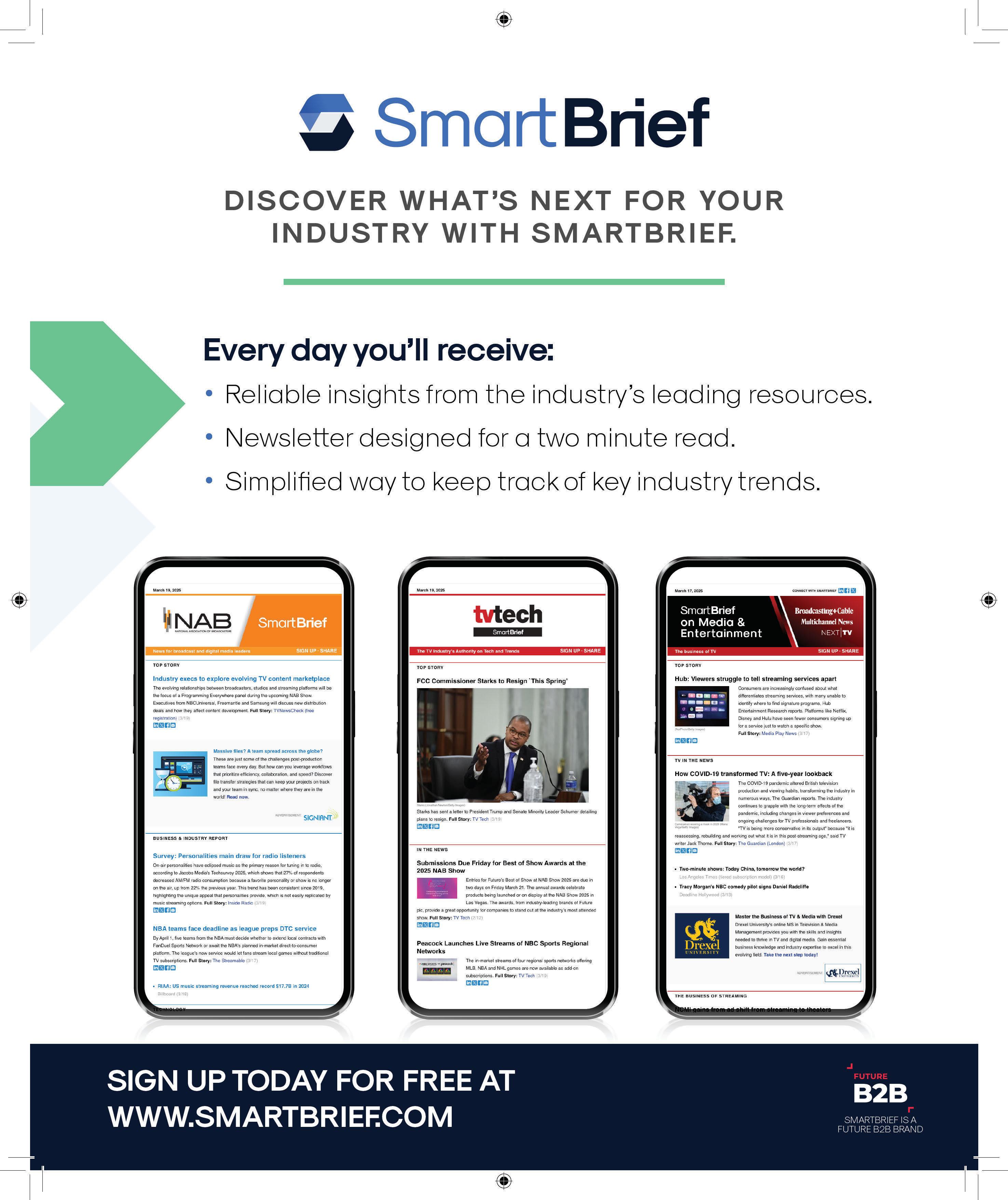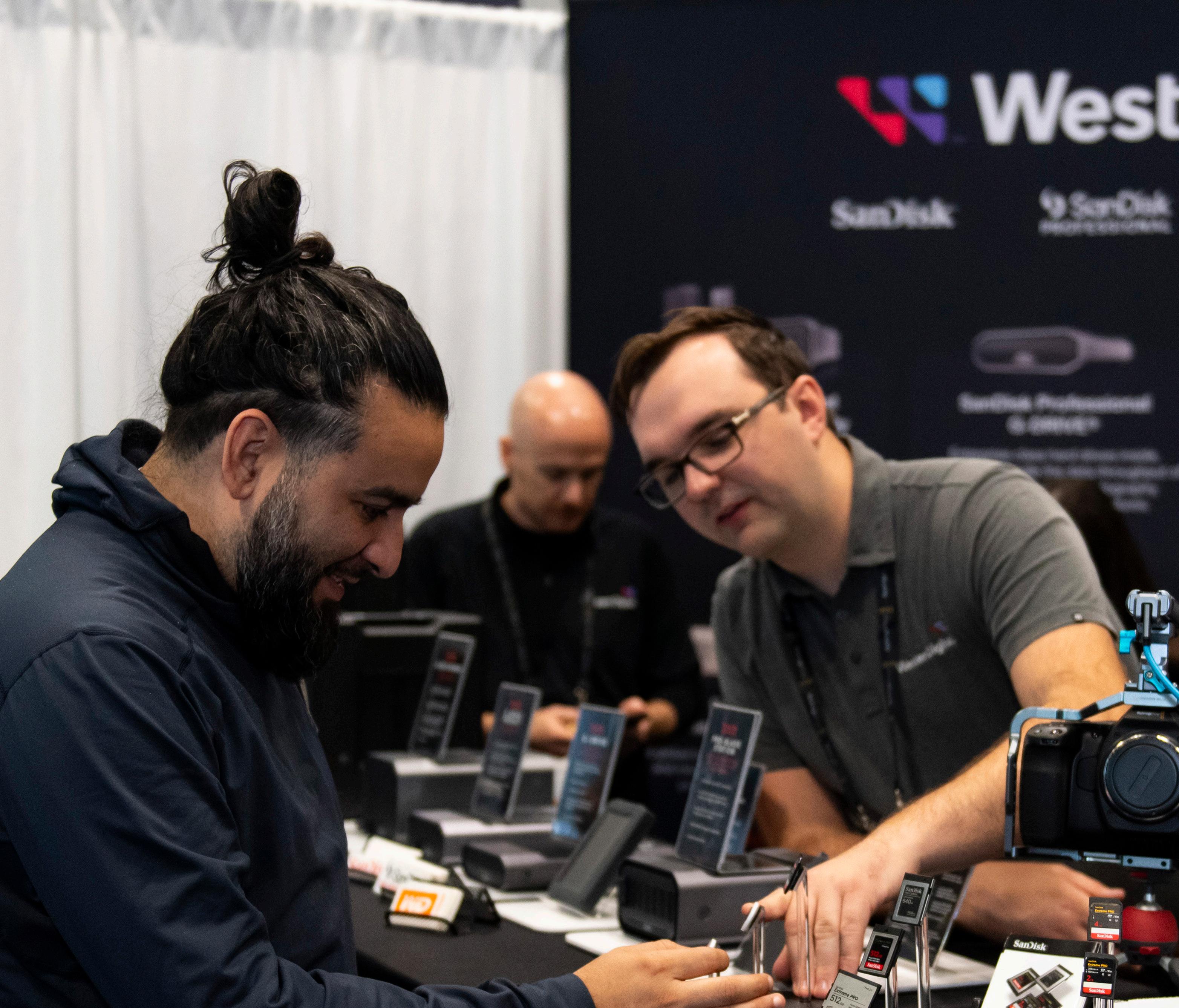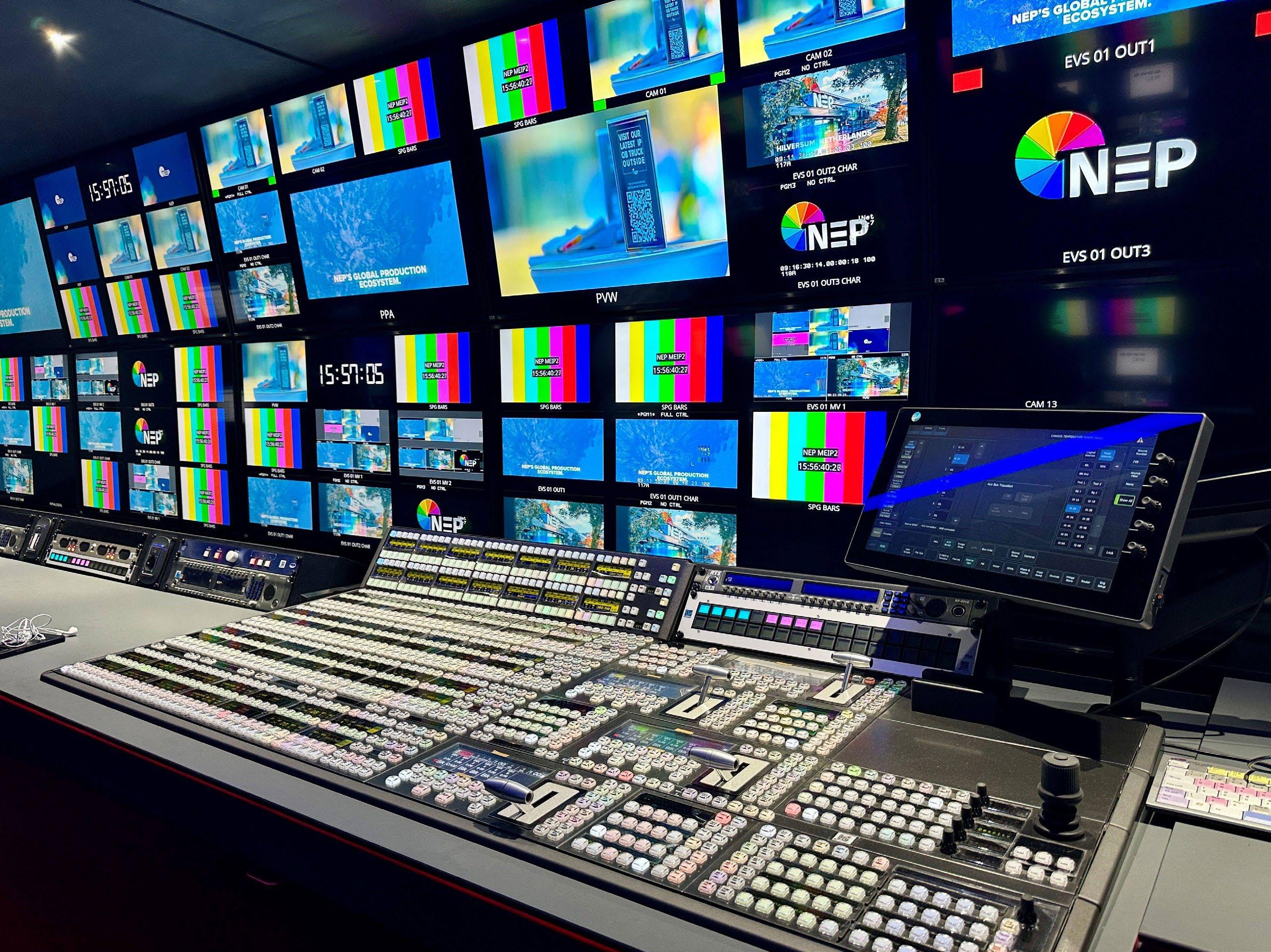


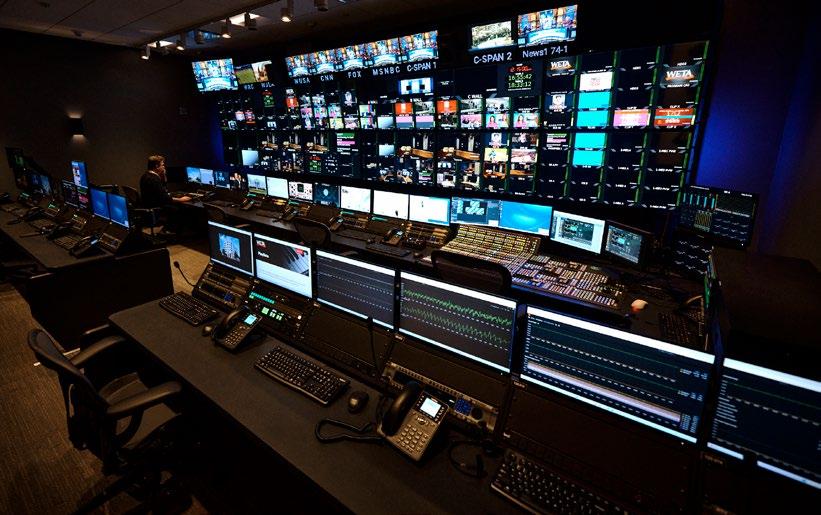




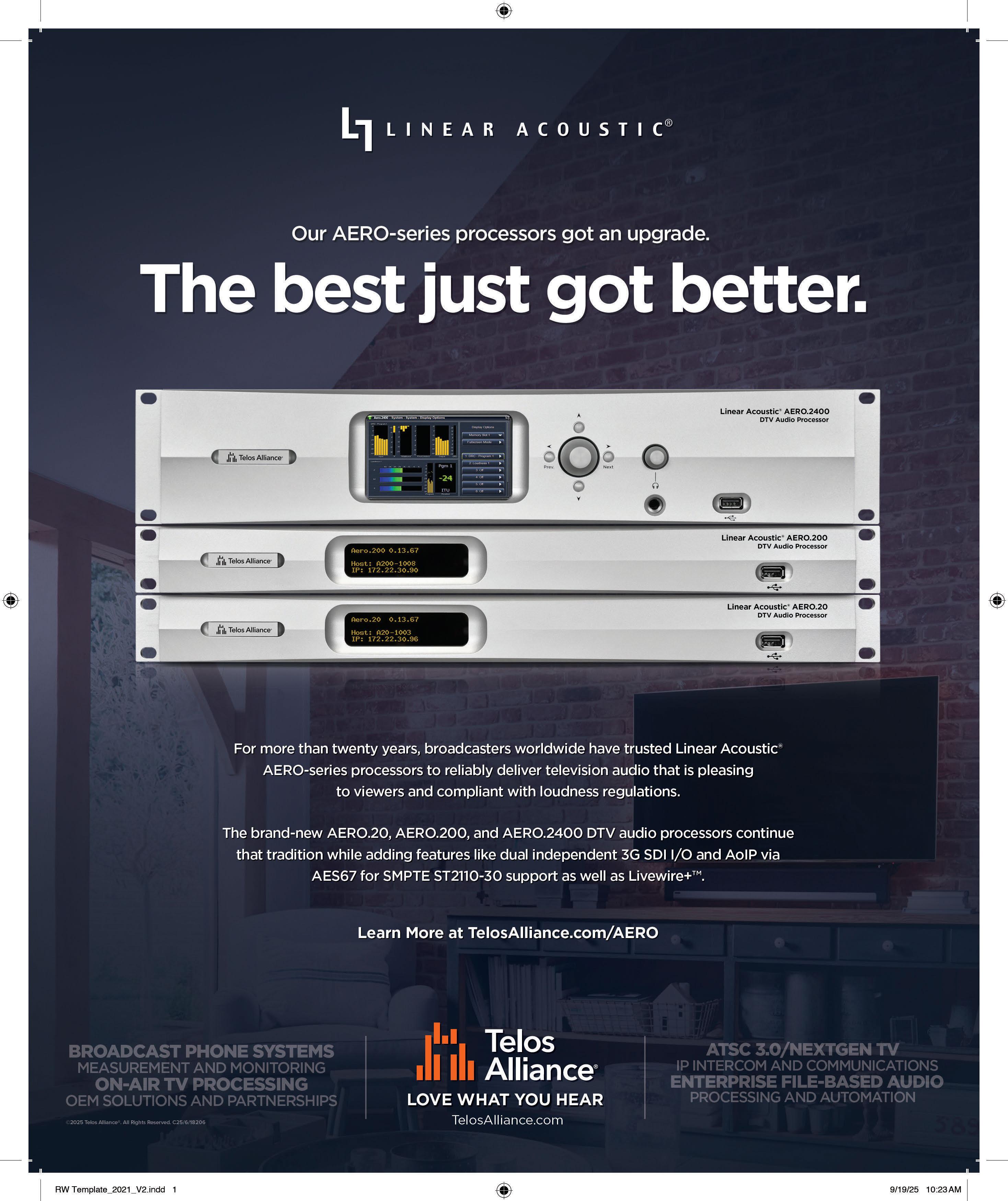
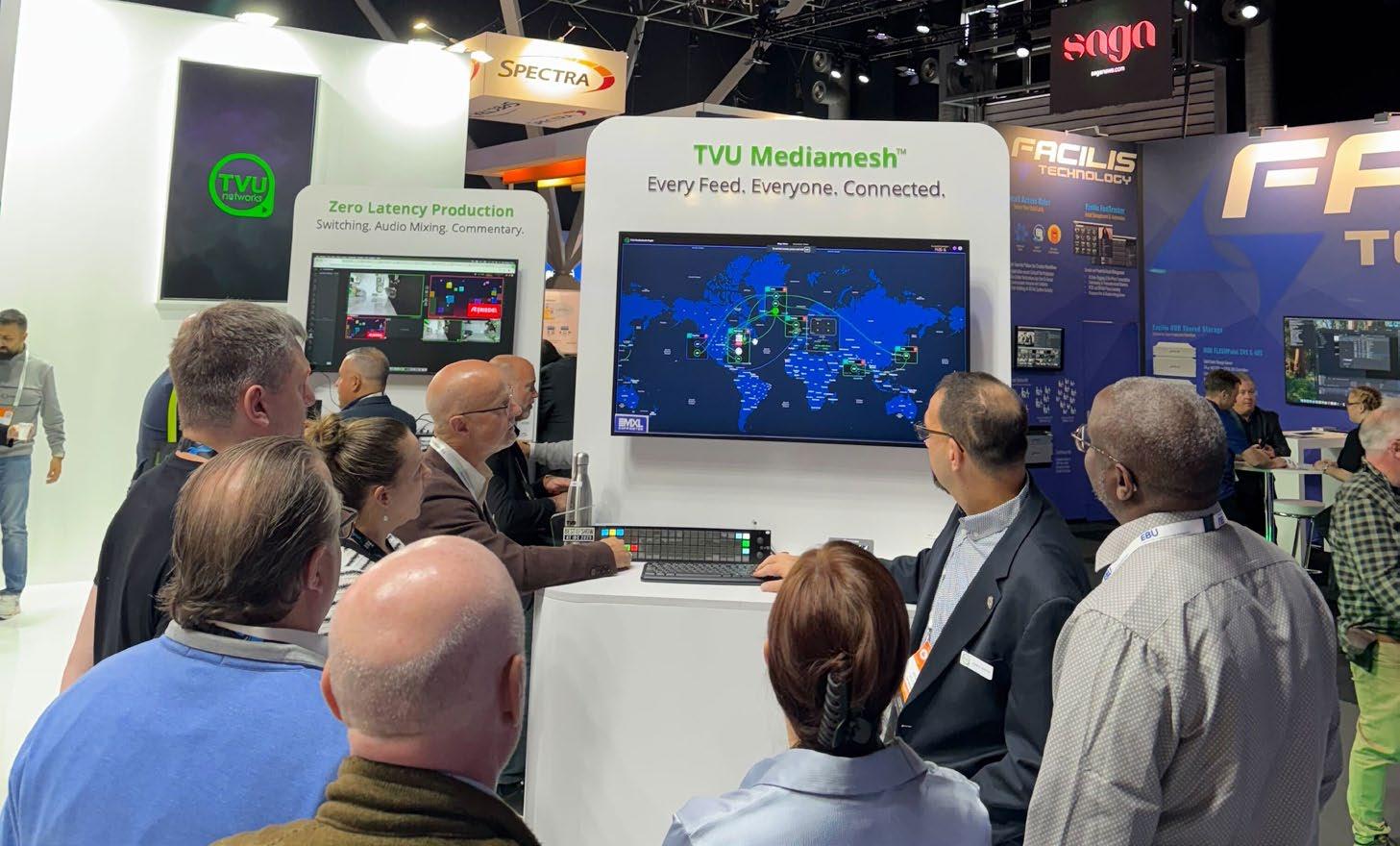
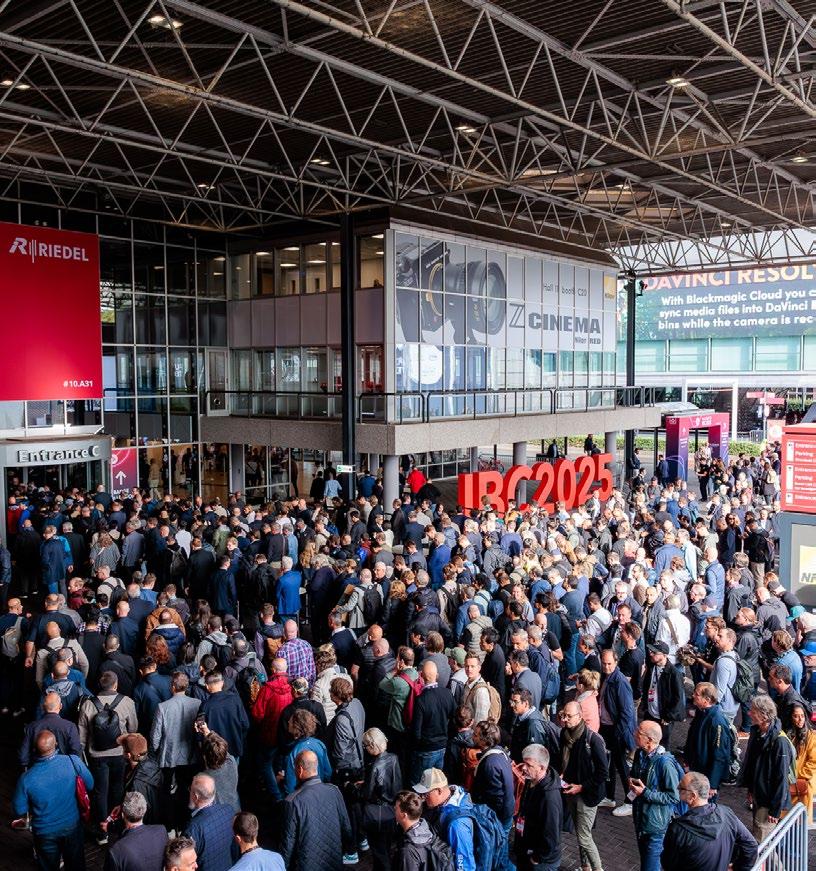
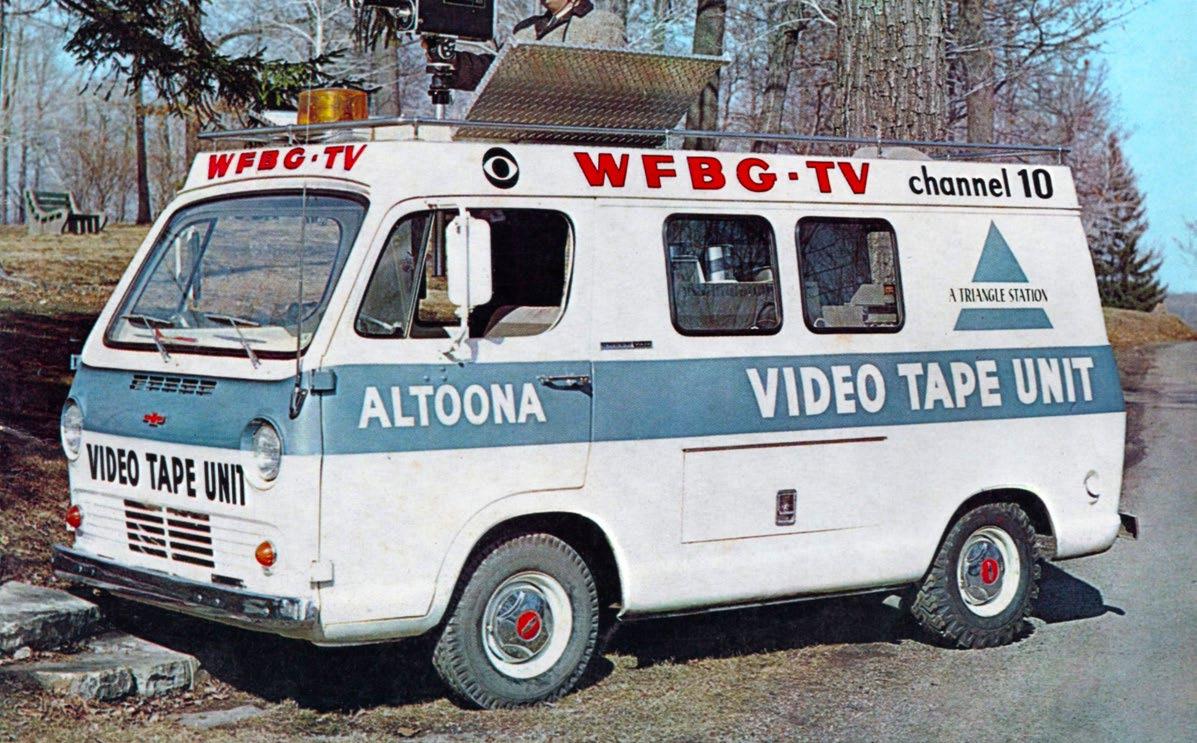
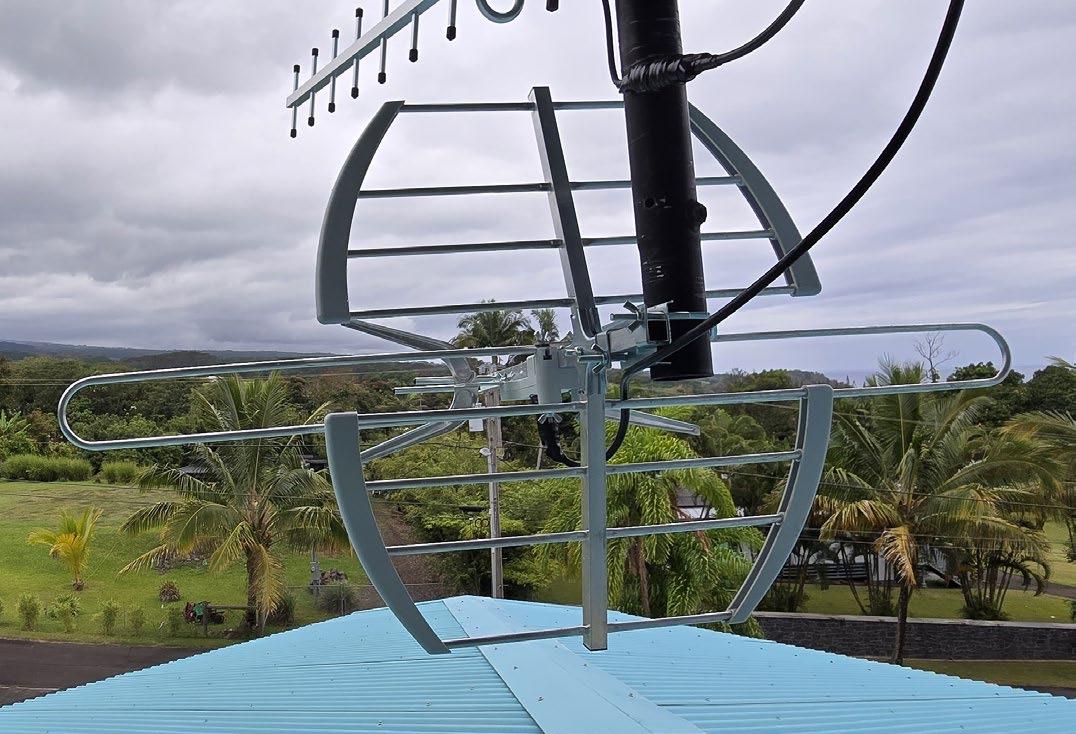
Kevin Hilton
Fred Dawson
Tom Butts
By James E. O’Neal
Karl Paulsen

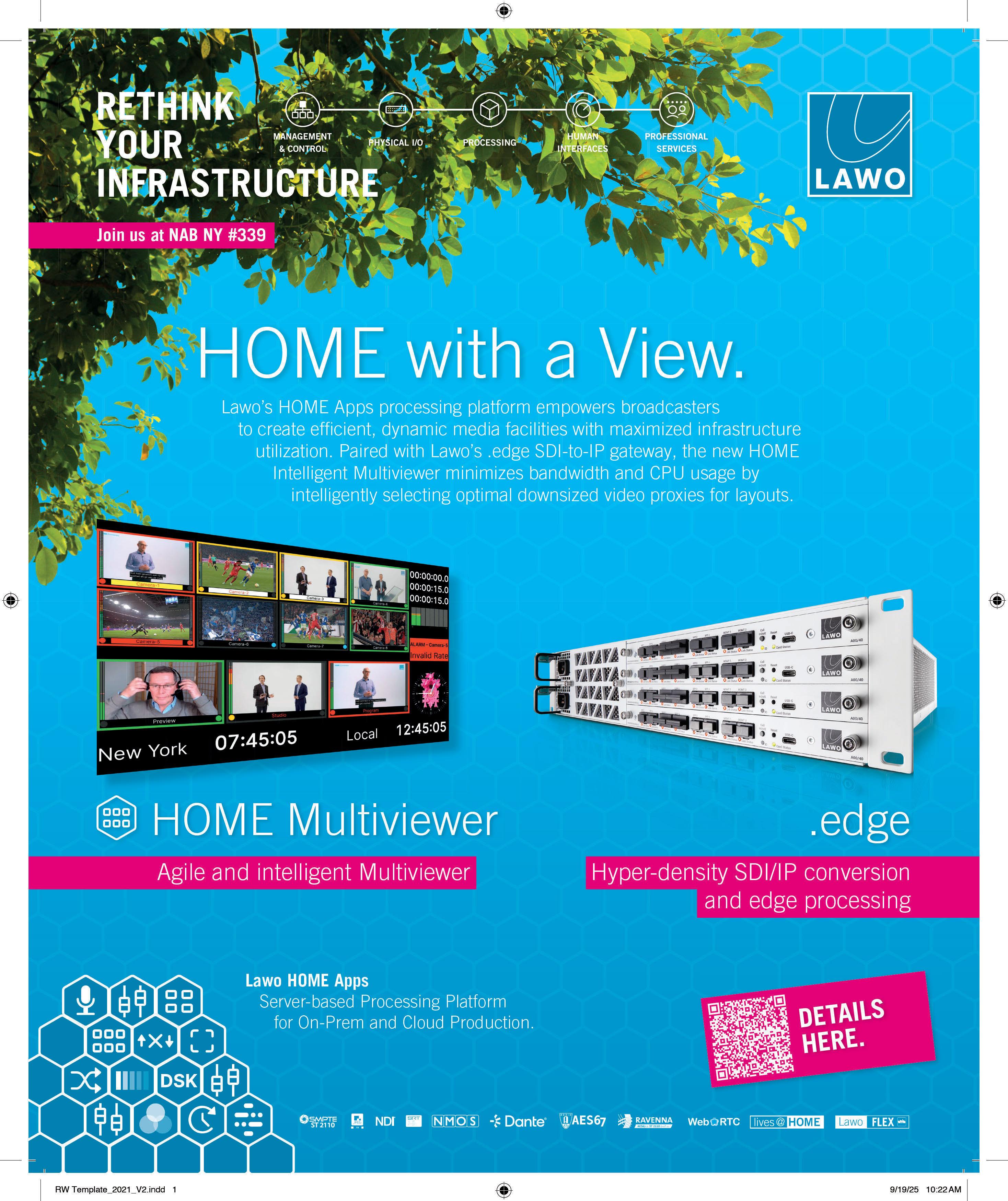














Kevin Hilton
Fred Dawson
Tom Butts
By James E. O’Neal
Karl Paulsen



In response to last month’s controversy over the Sept. 17 suspension of Jimmy Kimmel’s late-night talk show, National Association of Broadcasters President/CEO Curtis LeGeyt strongly defended the First Amendment rights of local broadcasters.
“The controversy surrounding ‘Jimmy Kimmel Live!’ has sparked understandable questions about broadcasters’ First Amendment rights and the influence of those in power,” he wrote in a blog post. “This is an unprecedented time in media history and moments like this demand a direct conversation about what is at stake.”
Following remarks by Kimmel about the Sept. 10 assassination of Charlie Kirk, conservative political activist and CEO of Turning Point USA, that Federal Communications Commission Chair Brendan Carr deemed “sick,” both Carr and President Trump issued statements threatening the broadcast licenses of stations carrying the show.
Kimmel returned to ABC Sept. 23, but at press time both Nexstar Media Group and Sinclair said their ABC-affiliated stations would not air the program.
That controversy greatly intensified the debate over regulation of broadcast content. Carr and Trump have both repeatedly argued the FCC has the right to yank licenses of stations that violate its public service rules on offering balanced news. Critics, such as FCC Democrat Anna Gomez, have argued this violates longstanding policy and First Amendment rights.
In his post, LeGeyt wrote: “Let me first state affirmatively that broadcasters must be
able to make decisions about the content on our airwaves free from government influence. The First Amendment affords our stations—and all Americans—this fundamental right, and the mere perception that broadcasters acted because of undue pressure is a problem for our credibility and the trust we have built with our audiences.”
“The First Amendment makes clear that broadcasters—not the government—bear the responsibility for editorial decisions,” he argued. “Local radio and television stations take this obligation seriously, working every day to reflect the unique and diverse needs of our communities, especially on sensitive issues. This is what makes local stations the most trusted sources of information. Ultimately, broadcasters are accountable to the viewers and listeners we serve.”
In defending broadcasters’ First Amendment rights, LeGeyt also took the opportunity to once again highlight the importance of local news and to push for the elimination of ownership caps on broadcast station groups as a way of strengthening the economics of local TV news.
“Beyond the obvious constitutional issues that have been raised, there is another challenge: Broadcasters are already fighting for our future, facing extraordinary disruption in the media ecosystem from Big Tech,” he said. “If the very act of owning or transferring a broadcast license carries the risk of political interference, it will drive investment further away from local stations at the very moment we need more resources to sustain local journalism.
“Make no mistake, NAB is fighting every day in Washington to ensure broadcasters have the scale to compete with national and global behemoths, to invest in newsrooms and local programming, to innovate and deliver freely available content to every American—whether on a television, radio, smartphone or car dashboard,” he concluded. “But all of that is futile if we cannot fulfill our most sacred responsibility: reporting to our communities without fear of government retribution. That is why this week’s celebration of First Amendment Day is not just symbolic. It is a reminder that the ability of local broadcasters to speak without fear of intimidation or interference is essential for the health of our democracy. NAB will continue to defend that freedom—publicly when necessary, and privately when most effective.”
Local TV Has Lost More Than Half of Its Share of Media Spend Since 2017

As broadcasters push to end ownership caps that they contend have hurt their competitive position, new data from Guideline provides some depressing details on just how much the local TV ad spend has declined as a share of the overall advertising market.
That data shows local TV accounted for only 6% of total media spending through June, which is less than half of the 13% share of spend it had in 2017.
In contrast, digital video’s market share increased from 15% in 2017 to 50% in the first half of 2025. Network TV’s share declined from 72% in 2017 to 44% this year, according to the Guideline data.
These shifts, the researchers noted, reflect ongoing structural changes in the media-buying landscape as broadcasters face increased competition from digital and social media. In response, the industry has been pushing to end ownership caps and consolidate operations.
But some analysts have argued that consolidation won’t be a quick fix for the sector’s ad revenue woes.
Guideline’s data set, indicative of the buying trends of the largest U.S. advertisers, found that local TV spend by product category remains highly concentrated, with automotive, entertainment and media, financial services and technology accounting for 69% of the spending.
So far this year, that reliance on a few major categories has hurt broadcasters, with all four posting double-digit yearover-year declines. Local spending by automotive is down 15.7%, entertainment and media down 20.4%, financial services down 19.3% and tech down 20.7%, according to Guideline.
By comparison, across the broader Guideline pool, these categories are performing very differently. In total spending, automotive is down just 0.8% YoY and entertainment and media down just 2.9%, while financial services is up by 14.1% and tech up by 9.7%. This underscores that local TV is underperforming these categories’ overall media activity, the researchers noted.

Congratulations to Brazil on its official decision to deploy DTV+ (formerly known as TV 3.0), which incorporates many components of the ATSC 3.0 suite of standards, including the physical layer.
The press release ATSC issued upon Brazil President Luiz Inácio Lula da Silva signing the decree mandating DTV+ noted that commercial service is expected in time for the 2026 FIFA World Cup, June 11-July 19, 2026—a move that echoes South Korea’s to transmit 4K UHD over ATSC 3.0 over the air domestically in time for the 2018 PyeongChang Winter Olympics.

gence (AGI). Futurist Ray Kurzweil predicts it by 2029.
• 6G rollout begins. Telecom experts point to 2030 if not sooner.
• Humans set foot on Mars. SpaceX thinks that will happen between 2029 and 2031.
• Commercial nuclear fusion power. TAE Technologies in Foothill Ranch, Calif., says that’s coming by the early 2030s.
• Publicly available brain chips. Neuralink expects to make that happen between 2035 and 2040.
• Consumer quantum computers. Experts expect that sometime between 2035 and 2040.
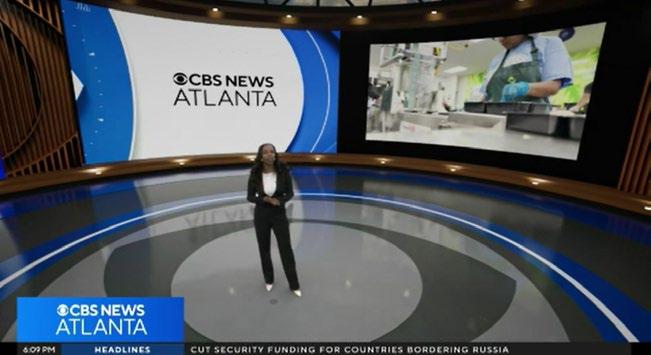
WUPA Atlanta, branded on-air as CBS Atlanta, officially launched its local newsroom with a new state-of-the-art augmented reality (AR) and virtual reality (VR) news studio last month.
The station is billing the AR/VR news studio as the first of its kind in the area.
It also said three-time Emmy Awardwinning journalist and Atlanta native Jobina Fortson-Evans has been named anchor of CBS Atlanta’s newscast.
Brazil’s timing brought to mind the National Association of Broadcasters’ petition for FCC rulemaking on the shut-off of ATSC 1.0 and replacement with 3.0. NAB has proposed a two-phase shut-off. In the first phase, stations in the top 55 markets would sunset 1.0 in February 2028. All the rest would pull the plug on 1.0 in February 2030.
So here we are once again waiting patiently for our regulators to clear the decks for NextGen TV. Does anyone want to wager on which comes first: full deployment in the U.S. or Brazil?
I’ve previously written about a conversation at NAB Show several years ago with Rich Chernock, former chairman of ATSC Technology Group 3, the one responsible for developing 3.0. I asked him which he thought would happen first: Nationwide deployment of ATSC 3.0 or 5G? Well, T-Mobile settled that. But what about tech developments? Which will come first? Full U.S. deployment of 3.0 or:
• The singularity—the moment that artificial intelligence surpasses human intelligence. Kurzweil predicts 2045.
That’s a whole lot of technical advancement before the proposed 1.0 shutoff. Who knows what the FCC will actually do?

If the 1.0 sunset slips much past February 2030, each passing year will look more like something out of a sci-fi movie than what you or I have experienced in our lifetimes, even when it comes to entertainment.
Who better to ask how quantum computing, possibly arriving in 2035, will affect entertainment than Google’s Gemini AI? Its answer: by “enabling hyper-personalized content recommendations and dramatically enhancing production through realistic rendering and complex simulations, while also offering advanced data compression and distribution for more efficient consumption.”
The newscasts premiered Sept. 15 at 6 p.m. and 11 p.m., anchored by Fortson-Evans, who brings a decade of experience and a deep connection to the market, CBS News and Stations said. Fortson-Evans will be the solo anchor of both evening newscasts from the virtual set, guiding viewers through immersive reports that blend cutting-edge technology with trusted journalism.
CBS said earlier this summer that owned-and-operated WUPA (Channel 69) would become the new home of the network’s entertainment, news and sports programming. Gray Media-owned WANF had been Atlanta’s CBS affiliate for 31 years. WANF has been renamed Atlanta News First and is transitioning to an independent, local-news-focused station.
“Our newsroom is built on the belief that local journalism thrives when led by people who know and care about the community,” said Shawn Hoder, vice president and news director of CBS Atlanta. “Jobina’s talent, integrity and deep Atlanta roots make her the perfect choice to lead our coverage as we continue to expand our news operation.”
• SpaceX’s Starship Mars reaches the Red Planet with an unmanned mission. Elon Musk is targeting the end of 2026.
• Humans return to the moon. NASA now is aiming at mid-2027 for Artemis III.
• The first supersonic passenger jet flight since the Concorde flies. Boom Supersonic looks to have passenger service in 2029.
• The dawn of Artificial General Intelli-
“Key areas of impact include improved AI, next-level visuals, optimized distribution, new interactive experiences,” it added.
Maybe that’s good news for broadcasters looking to cram more content into 6 MHz, but more likely it will heap on even more competitive pressure than today as these tools enhance the entertainment experiences broadcast competitors can deliver and make the battle for eyeballs even stiffer.
CBS Atlanta becomes the ninth CBSowned station to adopt this next-generation technology, joining those in New York, Los Angeles, Chicago, Philadelphia, San Francisco, Denver, Miami and Texas. It is the third CBS station to deliver all newscasts in a fully immersive AR/ VR format. The AR/VR studio transforms traditional news delivery into a dynamic, visually rich experience, enhancing viewer understanding of complex topics—from weather systems to civic issues—through hyperrealistic simulations and interactive storytelling.
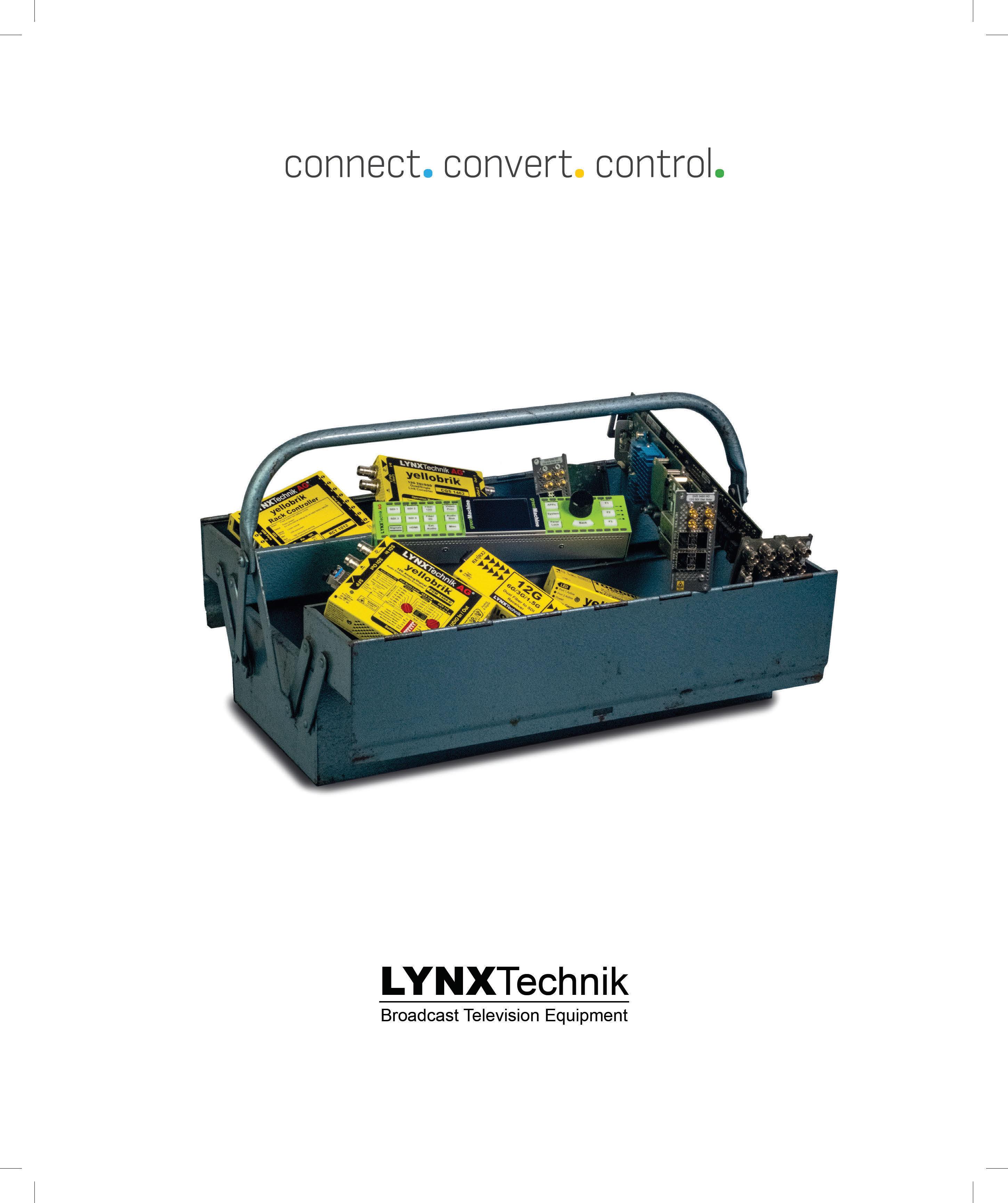
By Fred Dawson
TV broadcasters concerned about transitioning sports, news and other live production workflows to IP have every reason to throw those cautions to the stiffening winds of change.
Thanks to a swelling tide of innovations aimed at addressing the challenges, the transition isn’t nearly as difficult as it once was. New vendor platforms enabling flexible single-portal management of different protocols as the transition unfolds, better performance from cloud-based software once the transition is made and greater interoperability among competing solutions promise to put the migration to next-generation live production on a much faster track than has been the case so far.
Up to now, the dominant trend has centered on hybrid approaches that retain SDI amid the incremental introduction of ST 2110 in core A/V production workflows while leveraging ST 2110 and, with ever-greater frequency, the Network Device Interface (NDI) IP transmission protocol to transport IP streams into and out of those workflows.
As measured by Haivision in its latest annual survey of hundreds of broadcasters worldwide, 50% of respondents were using a hybrid video infrastructure combining SDI, IP, and cloud technologies as of late 2024, compared to 44% a year earlier, while 31% still solely relied on SDI and only 14% had moved to all-IP.
For many broadcasters trying to remain competitive in a fragmented multidevice market demanding new features and applications, the leap to IP has now become table stakes. “It scales better than any other technology, which is why we see most of our largest customers eager to make the transition,” says Alun Fryer, technical marketing lead for hyperconverged solutions at Ross Video.
“NDI doesn’t need 2110 to work with SDI,” he notes, but it takes 2110 to do in IP what SDI does with “the flexibility to work with audio and video separately.” That means for
users of NDI who want to get to an all-IP mode of production the question is, “How do I bring NDI into the 2110 world?”
Ross’ answer is the Ultrix platform, an appliance that integrates routing, signal processing and switching equipment to overcome the hassles of managing separate components. By abstracting SDI, ST 2110, and NDI along with newer IP transport frameworks like Dante AV and possibly Internet Protocol
“A huge number of customers still think SDI works for them, but it’s not future-proof.”
CHRISTIAN SCHECK, LAWO
Media Experience (IPMX) if demand warrants, the format-agnostic Ultrix platform consolidates everything for management on a single user interface, Fryer says.
Matt Weiss, vice president of business development and manager partner for BeckTV, says the systems integrator is seeing more broadcasters make the shift to IP for live production, “but every project comes with its own set of hurdles.”
“Moving to SMPTE 2110 and cloud workflows requires not only new infrastructure but also a new way of thinking about system design and signal flow,” Weiss says. “The biggest challenge isn’t the hardware, but the complexity of integrating diverse platforms, evolving standards and unique client requirements. Success depends on having people who can bridge the gap between IT and broadcast, ensuring that the technology delivers the flexibility that broadcasters expect without compromising reliability.”
Adam Marshall, chief product officer at Grass Valley, says the continuing shift to IP makes total sense for broadcasters.
“Customers more generally are looking for the flexibility and agility that IP brings, which is absolutely tantamount to being successful from a technology spend perspective,” Marshall says.


That said, Grass Valley, like other leading vendors, is taking steps in product development to ensure that broadcasters “looking for simplicity to avoid the 2110 educational overhead” can benefit from advances underway in the SDI domain, Marshall adds. Notably, there’s a resurgence of interest in SDI spurred by the opportunity to upgrade from 3G-SDI channels supporting HD 1080-caliber production to 12G-SDI channels supporting UHD 4K production workflows.
Grass Valley’s latest steps toward accommodating such diversity on the path to IP were on display at the 2025 IBC Show in Amsterdam last month. The company touted its GV Media Universe as a multivendor environment in which its virtualized Agile Media Processing Platform (AMPP) operates as a single control layer seamlessly integrating live production workflows across its own and other hardware and software solutions.
“The goal is to give customers full control and flexibility, so they can decide how, where, and when to deploy their infrastructure,” Marshall says. Toward that end, Grass Valley is now taking orders for its soon-to-be-released Agile Computing Engine (ACE) 3901 server card, a dense processing gateway that can bridge the latest advances like 12G-SDI channels at high volumes into the AMPP OS, whether they run on hardware or software.
Notably, as an accelerator to cloud-based IP migration, the ACE 3901 also brings Grass Valley’s innovative use of microservices into play with the AMPP OS. The company’s new AMPP GRID fabric orchestrates microservices running in a shared multivirtualized server environment to achieve processing performance matching its Field Programmable Gate Array (FPGA)-based appliances. Combining AMPP GRID with AMPP OS via the ACE 3901 platform “allows you to run over 300 native apps in live production,” Marshall says.
In another turn to open networking, TVU, long a leading force behind the connection of remote news and sports camera feeds over IP links to distributed production workflows, has responded to broadcasters’ migrations to cloud production by opening its MediaMesh-based remote production ecosystem to access by competitors.
TVU’s cloud-based software-as-a-service (SaaS) solution set allows operators anywhere to synchronously manage production from their web browsers with edits executed on resolution-reduced proxies instantly transferred to core high-res frames. “We’ve developed an entire live production suite in
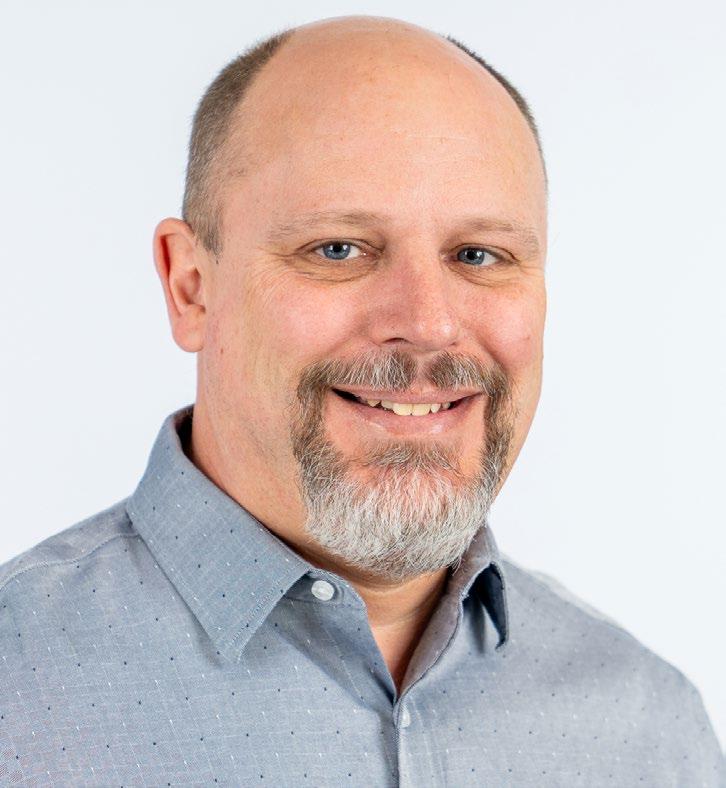
the cloud,” says Matt McEwen, vice president of product management at TVU. “If someone does something on a frame, the other operators will see that. We assemble everything in the background with the same time stamps.”
At IBC, the company debuted TVU MediaMesh as a shared memory space for live video with open APIs that make live signals instantly accessible to any authorized tool or production team anywhere.
At the same time, TVU made its SaaS solution components available as microservices, allowing “users to build unique solutions to accomplish one thing without using all the bells and whistles,” McEwen says.
Meanwhile, leading suppliers of the video cameras that feed live sports, news and other coverage into broadcast production workflows are vying to play a major role in driving the shift to IP. They’re providing operators the flexibility to mix camera outflows over SDI and IP transport protocols with the use of live production switchers supporting SDI and ST
“We’re seeing a shift to IP-based workflows, especially in the highend broadcast space. And 2110 has become a more viable option even in midmarket broadcast operations.”
PEYTON THOMAS, PANASONIC
2110 workflows in whatever end-to-end combinations work for them.
“We’re seeing a shift to IP-based workflows, especially in the high-end broadcast space,” Peyton Thomas, a product manager at Panasonic, says. “And 2110 has become a more viable option even in midmarket broadcast operations.”
Panasonic’s 4K Studio and soon-to-bereleased 4K Multipurpose Cameras enable the selection of multiple transport options, including ST 2110, NDI, SRT and dual 12G-SDI outputs, without the use of an external camera control unit (CCU). These can be fed into live production workflows by Panasonic’s KAIROS IT/IP software system running on core server mainframes that combine GPUs and CPUs to enable live A/V production processing with an unrestricted number of media effects utilizing SDI baseband or IP signals formatted to ST 2110, NDI or SRT.
“Our selling point for KAIROS is it’s an all-in-one kind of solution,” Thomas says. “It can be used by a single operator performing the entire production or with production split among multiple specialists.”
Sony Electronics, too, has put much innovative energy into simplifying the transition to live production through its Networked Live portfolio of cameras, switchers, media edge processors and other tools. It’s an ecosystem designed with a commitment to open interfaces that enable customers to mix other vendors’ products into operations as they see fit, according to Rob Thorne, Networked Live category head for the Live Production Solutions team at Sony Europe. There’s much mixing of SDI, 2110, NDI and SRT now, which is “something we never saw before,” he notes.
Sony’s latest generation of high-end HDC5500/5500V cameras used to capture sports and other live events come with optional adapters enabling ST 2110 signal output, including JPEG XS capabilities, without requiring CCU support. The company’s NXLME80 high-compression edge encoders, in combination with its MSL-X1 switchers, enable live production operations that can feed output from remote SDI and IP sources over low-bandwidth connections into core ST 2110 production workflows, with final output conforming to the low-latency requirements of live sports distribution.
For some vendors like Lawo and Techex, rather than creating transitional platforms, the focus is on making sure broadcasters who are jumping all in to IP production have the best possible working environment. Until
now, there haven’t been enough decisionmakers ready to take a serious look at the options, says Christian Scheck, head of content marketing at Lawo.
“Unfortunately, a huge number of customers still think SDI works for them, but it’s not future-proof,” he says. “If operations grow, as they invariably will, the capacity limitations of SDI routing will always be a problem.”
Lawo’s latest moves to make production over IP more attractive entail enhancements to its core HOME platform, which offers centralized on-site or remote discovery, authentication, security management and monitoring of all production-connected devices from a single user interface. The new HOME Apps include a new UI, a new production Multiviewer minimizing bandwidth and CPU usage and a HOME ecosystem extension that enables maximum infrastructure utilization in the creation of production facilities.
Techex is a longtime provider of services and products enabling Tier 1 sports broadcasters to bridge the gap between M&E production experts anchored in the SDI hardware

to Chief Product and Technology Officer Richard Bailey. Long serving in the background with a growing list of Tier-1 sports broadcasters, Techex is raising its profile as the need to overcome the pitfalls of taking shortcuts in the cloud grows more urgent.
Issues often have to do with utilization of generic open-source cloud platforms that are “incredibly powerful but aren’t designed for the precise needs of Tier-1 sports producers,” Bailey says. He cites the tx darwin microservices-based platform as key to addressing these problems with solution modules enabling secure and flexible live media processing, transport and monitoring with seamless transport stream switching, advanced remultiplexing and high-performance channel delays supporting failover between cloud infrastructures.
space and cloud-native engineers who “understand how to build future-facing software but don’t understand broadcast,” according
The shift to live cloud production is becoming a “very common trend in the market,” Bailey says. “The reason we’re playing an increasing role is the increasing difficulties that come with making that transition.” ●

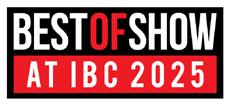

Adobe: Adobe Premiere Pro: Generative Extend
AJA Video Systems: AJA Video Systems IP25-R
Akta: Akta—AI-First
Appear: SIx300
ASTERA: Astera QuikPunch
Avid: Avid Content Core
Beamr: High-Efficiency, Cost-Effective Live 4K AI Quality Enhancement
Bridge Technologies: VB440 Container
Camera Corps: Camera Corps UHD Underwater
Camera
Clear-Com: Freespeak Icon
Cobalt Digital: ST 2110 and HDMI/SDI SAPPHIRE
BBG-2110 Mini-Converters
Eluvio: Eluvio Content Fabric and Application
Suite—Bangkok Release
ENCO: ENCO Raptor Cloud-Based Virtual Encoder Service
Evergent Technologies: Evergent Captivate 2.0: AI-Powered Churn Management
Evertz: ENX
Facilis Technology: Facilis Technology HUB Post Production Workflow
Frequency: Studio Live
Iconik by Backlight: Iconik Review
Imagine Communications: Imagine Monitoring Solution
InSync: MCC-UHD and Dual-Channel HD Standards Converter
Lawo: Lawo Workspace UIs
Mark Roberts Motion Control: Cinebot Nano
Mediagenix: Humanized Semantic Search
NAGRAVISION Sarl: NAGRAVISION-OpenTV ENTera NANLUX/NANLITE: Evoke 600C
NUGEN Audio: NUGEN Audio DialogCheck
PROTON CAMERA INNOVATONS GmbH: PROTON
PIO-E for IP and Bluetooth control
Quantum: Quantum Scalar i7 RAPTOR
Ross Video: NRG
Saramonic: Saramonic Witalk9 Full-Duplex Wireless Intercom System
SDVI: SDVI Rally Connect content and metadata exchange service
Shure: DCA901 Planar Array Microphone
Storj: Modernizing Media Production Workflows with Storj
Strada: Strada
swXtch.io: groundSwXtch On-Prem Multicast Network Overlay
Techex: tx edge for Uniquely Capable Live Contribution
Telos Alliance: Minnetonka Audio AudioTools Server V7
Vizrt: Viz Arena 6
Whale TV: Whale TV
Yospace Technologies Ltd: Dynamic Prefetch Solution
Despite slight decrease in attendance, business and floor traffic were brisk
By Tom Butts
Visitors to the 2025 IBC Show were eager to discuss the latest trends and test out new products and services, all with the goals of content monetization and helping broadcasters and media producers improve the cost, efficiency and speed of producing that content.
Whether you’re a traditional broadcaster, streaming service, sports producer or content creator, the show, which took place Sept. 12-15 at the RAI Amsterdam, had something for everyone. Vendors on the show floor focused on improving production efficiency and flexibility through cloud and IP-based workflows, using AI to automate tasks, optimize archives and expand content discovery, as well as discussing new standards that promote interoperability.
The show reported 43,858 visitors, a slight decrease from the 45,085 who attended in 2024. Attendees came from more than 170 countries and there were more than 1,300 exhibitors scattered throughout the 14 halls that make up the RAI labyrinth.
Thomas Lind, product management director at Appear, summarized today’s media consumption market and the impact younger viewers are having on how media companies will respond.
“The younger generation uses everything, but the way we distribute the TV content to the consumers has changed,” he says. “The underlying technology to do that is fundamentally the same—yes, we may have new codecs, different network structures bringing live video. We’re consuming more and more video, it’s just coming from different sources.”
Jeff Moore, executive vice president and chief marketing officer at Ross Video, commented on how product development has been impacted by the move from hardware to software.
“There’s always incremental improvement, but I think we’re just used to a pace of improvement that has increased over the years,” he says. “The amount of change that’s happening in business is huge, and it’s true on the supplier side as well; the amount of
innovation that we can drive across the board on our products is accelerating. It’s gotten easier to build things. First of all, we used to have to develop all this stuff almost from scratch. And then we went to software-based libraries, platforms, Windows or Linux, etc., that gave us some capabilities that we didn’t have before.”
With the move to work-from-home scenarios accelerated by the pandemic, companies now have a much wider pool of professionals to pull from, Moore adds. While sales will always need to be within close proximity to their customers, tech developers can come from anywhere in the world now.
“Remote collaboration has gotten easier,” Moore says. “You can hire experts and they don’t have to move to Ottawa [Ross’s home base] to be part of the team.”
As has been the case for years now, interest in using IP and cloud computing for live production was top of mind for many attendees. What was once a growing trend turned into a tech tsunami five years ago when remote production became the default for broadcasters worldwide. Moving to that phase meant taking the cloud and IP more seriously.
But each case can be different—the demands of live sports can be different from broadcasting a legislative session or town hall, for example. While some low-profile events can be broadcast entirely in a cloud-based platform, the vast majority of live production is done in a hybrid on-prem and cloud architecture.
Jon Wilson, the new CEO of Grass Valley, noted as much when discussing how customers are deploying Grass Valley AMPP, the company’s cloud-native live production platform.
“Let’s demystify the fact that AMPP is a cloud-only solution, as over half of our customers today are running AMPP on-premise with COTS compute, whether it’s a single remote control solution, a monitoring tool or a full endto-end software-defined production,” he says.
As an industry that operates on standardsbased technology, new protocols such as
IPMX and MXL were also among the most popular discussions on the show floor.
Developed by the AIMS Alliance to bring the functionality of the SMPTE-2110 videoover-IP transport protocol to the AV industry, IPMX has gained substantial ground and in many ways, is helping to blur the lines between the two industries.
Suzana Brady, senior vice president of worldwide sales and marketing for Cobalt Digital, discussed the advantages IPMX brings to both customers and vendors, many of which share the same goals and infrastructures.
“IPMX is a simplified version [of 2110] for Pro AV,” she says. “So now Pro AV companies that deploy equipment in high densities of many vendors together—if all vendors are on the open-standard IPMX, it’s so much easier. Everything talks, it’s easy to implement, and you don’t need new personnel, because it’s very, very basic.”
To address this expanding market, Cobalt has introduced two new Sapphire BBG miniconverters that were illustrative of the industry’s move to bridge both worlds. “It’s a 2110 IPMX conversion to HDMI and SDI and vice
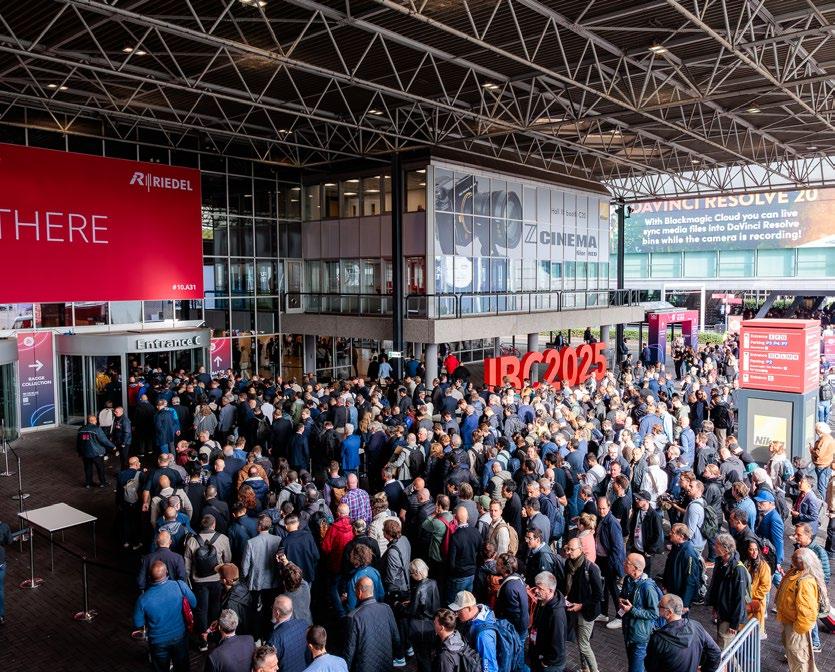
versa,” Brady says. “So you can put it in a truck and receive JPEG-XS content, or IPMX content onto HDMI monitors.”
Another emerging industry standard that was the talk of the exhibitor floor was MXL, also known as Media eXchange Layer. Just prior to NAB Show in April, the Linux Foundation, an organization that promotes collaboration on open-source software, hardware,
standards and data, announced the Media eXchange Layer Project in collaboration with the European Broadcasting Union (EBU) and the North American Broadcasters Association (NABA). MXL is designed to enable seamless, real-time, in-memory exchange of video, audio and timed metadata between media functions within modern, software-driven, distributed media production environments.
Andreas Hilmer, chief marketing officer for Lawo, says MXL advances a more open approach to IP-based media production.
“The concept is basically to build a facility where the processing is based on standardized servers running software with licensing that also allows you to allocate your resources flexibly,” he says.
Del Parks, president of technology for Sinclair Broadcast Group, touched on the importance of MXL at the Grass Valley Forum.
“MXL is going to be really important,” he said. “It will allow us to freely exchange information, video files, without a lot of transcoding, without a lot of interference,” he says. “It really is a very important step in our industry.” ●

By James E. O’Neal
(In Part 1, published in the August issue, James O’Neal traced the origins of ENG. In Part 2, he examines the shift from traditional film to electronic methodologies in capturing news events)
Even in television’s infancy, broadcasters realized that merely reporting news events from a studio setting provided little in the way of engagement with their viewing audiences. Almost from the time that radio moved out of the starting gates, “man-onthe-scene” reporting—enabled by access to a well-established network of telephone circuits—became a standard ingredient of newscasts.
Some radio reporters developed a knack for creating very good “word pictures” of what they were witnessing in connection with breaking news events, with this practice developing into something of an art form by the 1940s. (Recall Edward R. Murrow’s reporting of live events as war broke out in Great Britain, that began with “This Is London” and included the warbling of air-raid sirens and other wartime sounds.) The best the few television stations in operation during World War II could do was to augment the reading of news service copy with a map indicating combat locations.
While pioneer television broadcasters longed to emulate the immediacy and spontaneity in on-the-scene reporting provided by their radio counterparts, the physical size, weight and electrical power consumption of TV gear precluded such operations. The equipment in use in the medium’s formative years was also finicky. An image orthicon camera required several minutes for warm-up and alignment. (Even the initial network reporting of the 1963 assassination of President John F. Kennedy was via a “bulletin” slide and a newscaster voiceover as studio cameras had been switched off and couldn’t be forced into immediate operation.)
Another factor limiting coverage immedia-
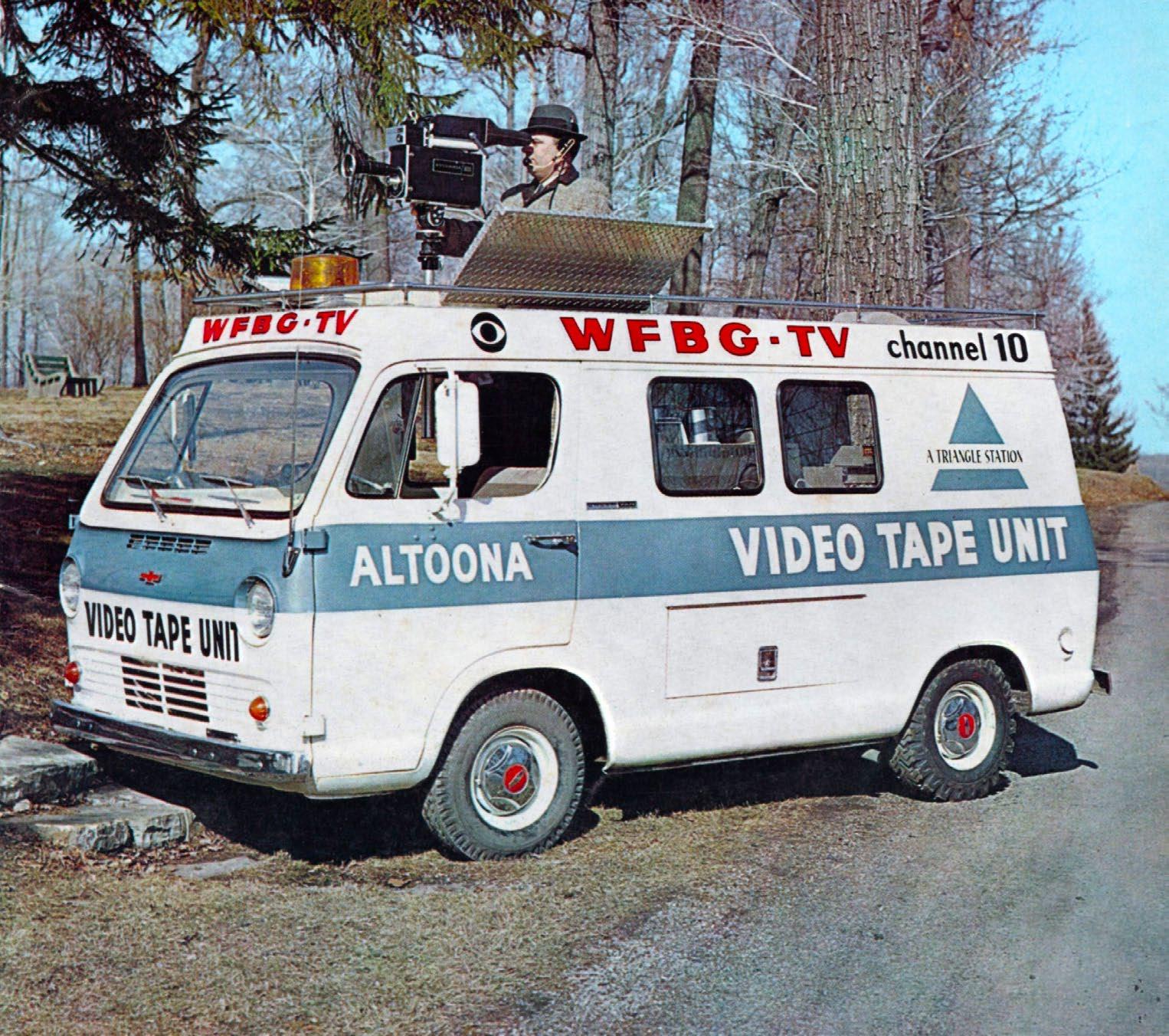

cy was connectivity. Unless a common carrier (regional or national telecom) had already established coaxial cable or microwave linkage close to the area of interest, or a clear microwave path existed between the news scene and television station or mountaintop transmitter site, “live shots” were not possible.
On-the-scene video recordings were not really an option, either, as first-generation VTRs were large and heavy on power consumption (think multiple racks of vacuum tubes), making even the recording and delivery of tapes back to the station or network by a courier equally prohibitive in terms of spontaneity in news coverage. Even with the time required
for chemical processing and editing, it was faster and less complicated for television broadcasters to send a crew with a 16-millimeter sound-on-film camera to a news scene.
However, by the mid-1960s, aided by the advent of better and more reliable solid-state devices (especially transistors), broadcast equipment manufacturers were beginning to show (and deliver) a number of smaller and less power-consumptive counterparts to the vacuum-tube-based designs that had launched the postwar television industry. This technological shift was especially noticeable as the second generation of videotape recorders started to appear, with VTR pioneer
Ampex beginning to shrink the size and weight of its machines by replacing vacuum tubes with transistorized circuitry.
One of Ampex’s videotape recorder developments apparently caught the eye of someone at Triangle Publications, a major Philadelphia-based broadcast group that operated stations in multiple markets. The new Ampex machine—the VR-660— was released in late 1962. Despite its small physical size (about 30 by 18 by 15 inches) and a price tag about one-quarter that of the “quad” machines then in use by broadcasters, it delivered video also as good as the quads.
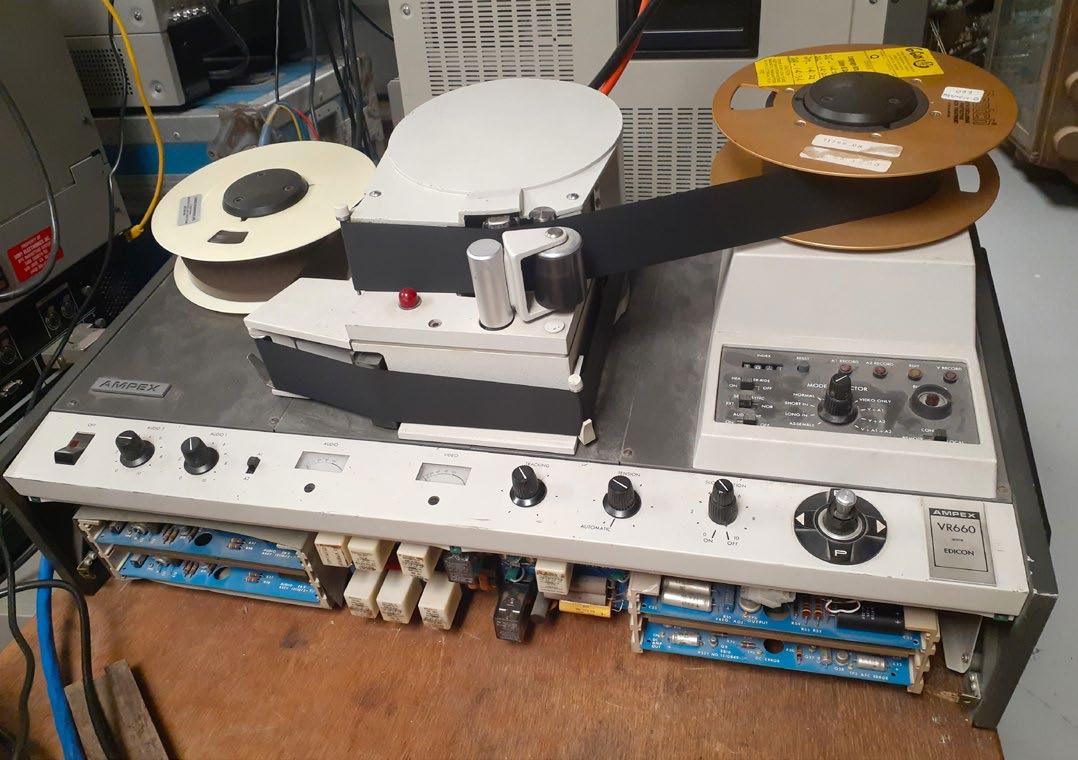
The release of the VR-660 by Ampex in late 1962 spurred some early ENG experimentation by at least one broadcast group. The 2-inch helical scan machine was much smaller and less costly than its “quad” counterparts, but provided almost identical video quality. The unit served as the centerpiece of Triangle Publications’ early experimentation with electronic newsgathering. (The VR-660 shown here is a later model equipped with rudimentary editing capability.)
The VR-660, along with a “miniaturized” television camera from consumer/industrial electronics company Sylvania, provided the basis for experimentation by Triangle with videotape as an alternative to film for capturing news events.

During the mid-1960s, the group trialed an early iteration of single-camera no-frills completely electronic newsgathering. The
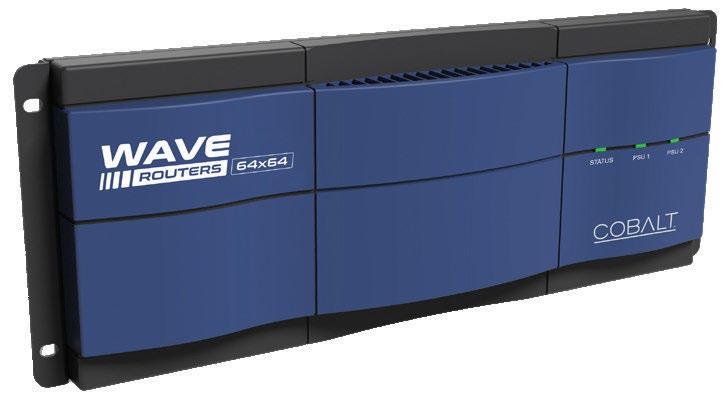

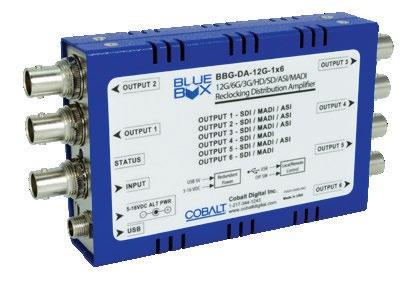
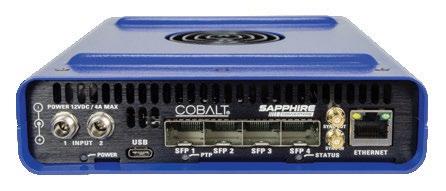

experiment was conducted at Triangle’s New Haven, Conn., station, WNHC-TV (now WTNH), and at its Altoona, Pa., property, WFBG-TV (now WTAJ). Other Triangle stations may have also participated in the trialing, but after 60 years and multiple station ownership changes documentation is scant.
The compact size and reduced power requirements of the VR-660, along with the availability of a self-contained vidicon camera—a Sylvania vidicon model designed for industrial applications and providing “FCC-legal” EIA RS-170 sync—allowed Triangle engineers to create a small, easily maneuverable mobile unit that would be the forerunner of ENG units emerging a decade or so later.
The vehicle selected for the experiment—a Chevrolet ½-ton “panel truck”—was not much larger than automobiles of the era, allowing it to be easily driven and parked very close to events being covered. The greatly reduced power requirements of the solid-state gear
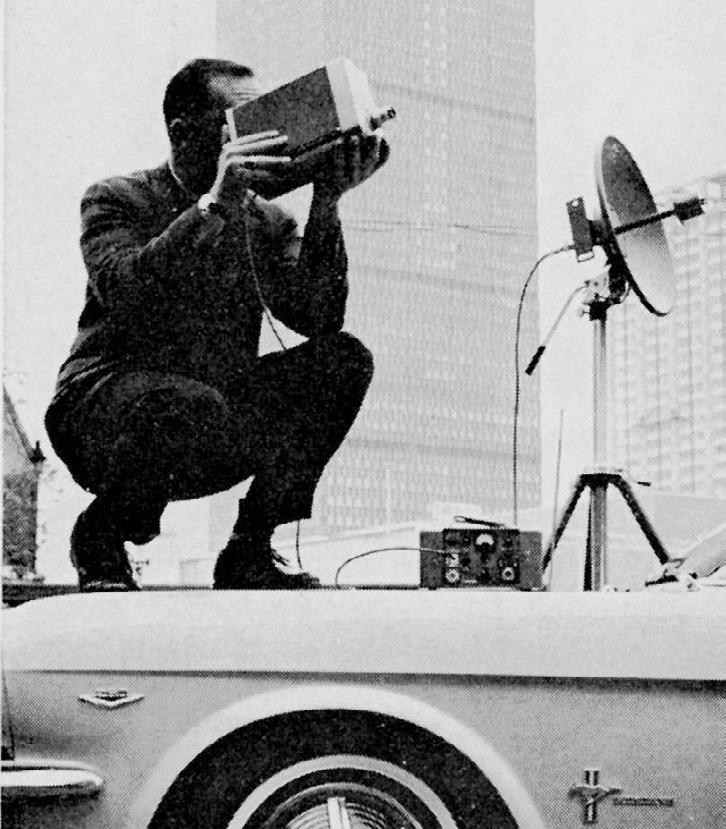
By the mid-1960s, at least one manufacturer was offering compact solid-state microwave gear for live transmission of news events. Although interest in the technology was initially limited, it would play a major role in the ENG “boom” that would occur in the next decade. In this December 1964 Microwave Associates ad, the hood of a 1964 Ford Mustang serves as a platform for both the operator of a small camera and the “lunchbox-sized” microwave transmitter.
selected for the project also negated the need for prearranging AC power drops necessary to meet the demands of that era’s conventional television mobile units, with their large, vacuum-tube-driven image orthicon cameras and racks of support electronics.
All gear in the Triangle vehicles—camera, recorder, video monitor and a small audio mixer—was easily powered via a 1-kW DCto-AC inverter driven by a 24-volt battery charged from a second generator driven by the vehicle’s engine.)
Triangle’s modifications also included the cutting of a 3-foot hatch into the top of the vehicle and adding a support platform below for the camera operator, so that if time was of the essence, coverage of a news event could begin immediately without unreeling cables or setting up the camera “on sticks.” Due to the portability of the gear and the vehicle modifications, the operator could also record events while the van was in motion.
Rather curiously, there was apparently no attempt to incorporate microwave gear to the van’s equipment package to enable live
transmissions, though at least one manufacturer was offering small, solid-state microwave links designed specifically for such applications. (By the mid-1960s, Microwave Associates (later M/A-COM and now MACOM) touted “lunch-box-sized” transmitters consuming a mere 50W that were intended “to bring live TV field coverage within range of every broadcaster.” The company even offered a small camera as an “accessory.”)
Although the Triangle newsgathering vehicle design was revolutionary, its use was rather short-lived. (When the author joined the WNHC-TV staff in 1970, the early ENG experiment was just a distant memory among some of the older staffers.) This was likely due to a number of factors, the greatest of which was the inability to easily edit the videotapes produced.



While the VR-660 utilized 2-inch videotape, its recordings could not be played back by conventional “quad” broadcast VTRs due to differences in head scanning. (In the interest of simplifying design and operation, the VR-660 incorporated a helical tape scan as opposed to the transverse scanning used in larger machines.) To edit recordings, stations either had to purchase a second VR-660 (around $14,000 in 1965; more than $140,000 in 2025 dollars) or transport the 100-pound machine from the van to the TV studio for dubbing the video to conventional “quad” VTRs that did provide editing capability.
Another major factor that possibly sidelined this early ENG attempt was the widespread conversion to color television broadcasting taking place in the 1960s. The initial Ampex VR-660s lacked color capability, and there were no small or easily portable color counterparts to the Sylvania camera at the time of the Triangle experiment. (Ampex did eventually add both color and editing features to the VR-660, but by that time, Triangle stations had moved away from ENG and into 16-mm color film for capturing news events.)
Although this very early foray into electronic newsgathering ultimately went nowhere, it doubtless captured the attention of others in the industry (the June 1965 issue of Broadcast Engineering magazine featured a cover story account of the WFBG-TV implementation). It was only a matter of time, along with the creation of equipment better suited to task, before the Triangle experiment would be repeated by others. ●
(The next chapter of this series tracing ENG’s history examines the beginnings of electronic newsgathering in its modern form, along with its early rollout at both station and network level.)
aggregation and management, combined with artificial intelligence, are advancing adoption
By Kevin Hilton
In the current evolving device and platformsbased media world, the smart TV was the means for viewers to watch not only linear television but also streamed channels, primarily video-on-demand, and interactive services. Increasingly, as more people watch home entertainment via OTT, smart TVs are now part of an overall connected TV system, all based on streaming with integrated TV, VOD, internet connectivity and gaming access.
Because of this, MediaKind Principal Technologist Tony Jones says CTV can be viewed in two different ways.
“One is from a device perspective for streaming in general terms, and what that means for broadcasters, amongst others,” he says. “The other is about streaming services that CTV vendors provide themselves. There is the question of whether there’s a difference between, for example, Samsung’s own service streamed to a Samsung TV and BBC services streamed to a Samsung TV. I think in principle they’re the same, but having consumer electronics vendors coming in with their own streaming services has a commercial disruptive impact on the market.”
Samsung, with its TV Plus platform, LG Channels, Vizio WatchFree+ and others, including Roku TV, are further expanding an OTT landscape established by Netflix, Prime Video and YouTube that is also seen as the future for linear broadcasters. Driving this, as Imagine Communications CEO Steve Reynolds observes, is data-gathering, which in turn underpins the commercial potential of these platforms.
“Data is a big part of
it, because it’s what makes the inventory in these CTV systems so valuable,” he says. “It’s a combination of the data you can get around viewership and then how it can be used to make the audience and the inventory more valuable to whoever is controlling that inventory. But what it really comes down to is monetization. The customers we’re working with are doing anything around CTV as an enhancement of their monetization strategy.”
“Broadcasters today are not just competing with other TV networks, they’re competing with every app on a user’s phone.”
TOBIAS FRÖHLICH, QVEST ENGAGE
This is very much the approach of organizations, notably in the sports market, with in-house media operations that give them control of how they present coverage of their events. Formula One (F1), for example, expanded its streaming channel in March of this
year, launching the F1 TV Premium tier that offers UHD, HDR, multiview and personalized viewing options.
“Fans can get fully immersed in what F1 is all about [over a race] weekend,” says Stephanie Lone, global leader for solution architecture at Amazon Web Services (AWS), which provided several of its Elemental Media systems, plus Amazon CloudFront, for the new video workflow. “There’s the actual viewing experience—the 4K/UHD/HDR stream itself—but also the way F1 uses data and generative AI in a much more meaningful way for the consumer. It’s not just for monetization purposes but is more about the fan engagement as well.”
This level of technological innovation— and, of course, investment—increases the challenges that linear broadcast companies in particular face as they move further into the streamed domain.
“Broadcasters today are not just competing with other TV networks, they’re competing with every app on a user’s phone,” Tobias Fröhlich, managing director of product at Qvest Engage, says. “To stay relevant, they need to think and act like digital platforms, reimagining the TV experience by combining live and local strengths with the personalization, interactivity and community features that audiences now expect.”
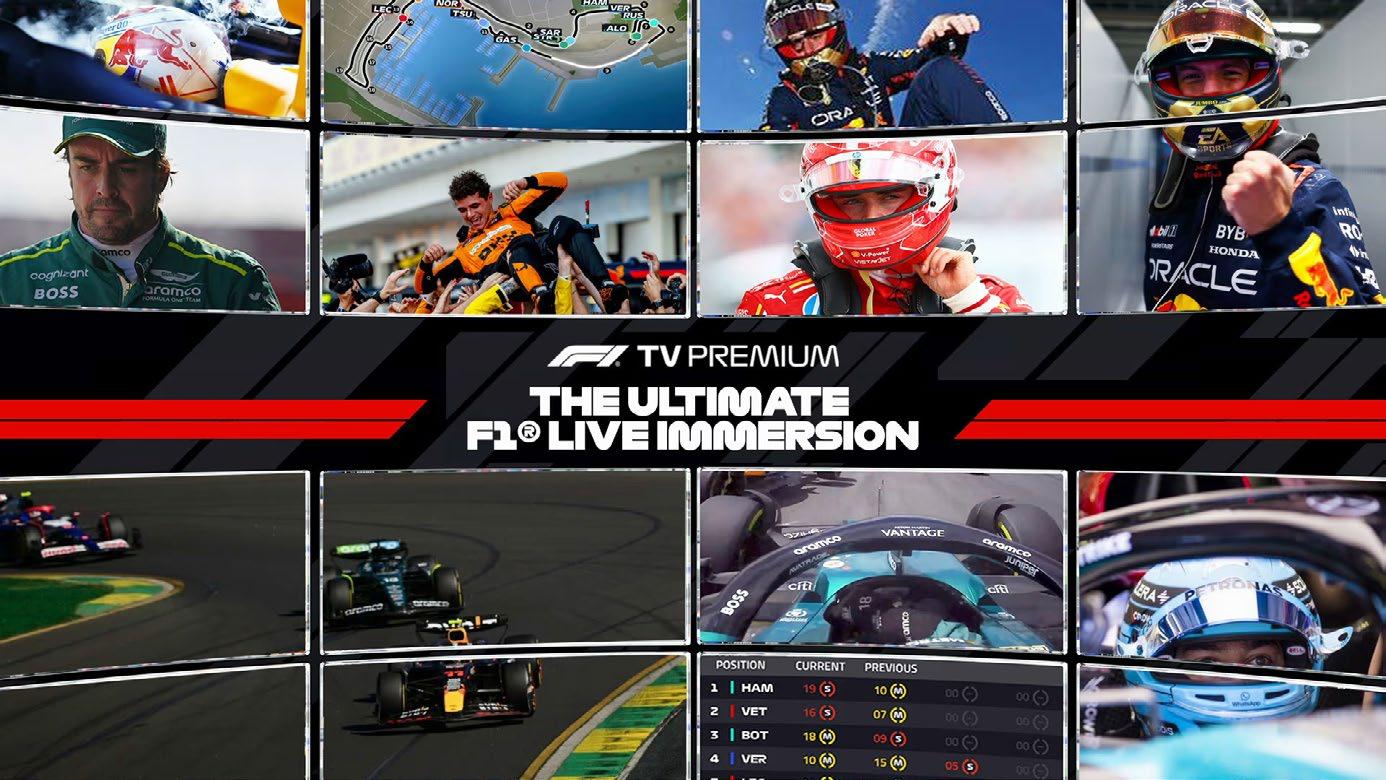
Broadcasters always have opportunities to get more value from their content, especially through free, ad-supported streaming television (FAST) channels and other platforms, says Scott Wall, principal solutions architect at Signiant.
“To take advantage of that,” he says, “you’ve got to move content quickly and get it to the right place, in the right format.
Monetization, visibility and security are big [parts of this]. A lot of the monetization in CTV is tied to how quickly you can deliver the right assets with the right metadata, especially for ad-supported content.”
Like their counterparts in the U.S., European commercial broadcasters have been experiencing flat revenue growth in recent years. But companies such as RTL, RTF and Canal+ are seeing ad sales increase through OTT services, says Eric Gallier, vice president of video customer solutions at Harmonic.
“The reality today is that they are investing a lot in their streaming platforms,” he says. “They are seeing growth in CTV, which is fueled by advertising. And at some point we [will] see the shift between traditional linear broadcast to streaming and CTV, which, for me, is streaming.”
North American broadcasters are now taking advantage of opportunities given by streaming and CTV to make the most of existing assets. Reynolds offers the example of Canadian broadcaster Rogers Sports & Media, which was able to exploit sports rights it
owned as streamed channels.
“We worked with them to set up a public cloud-based infrastructure for native delivery, connecting to consumers on various CTV platforms through smart TVs or [devices like] Roku boxes,” he says. “They had a pretty short window in which to take advantage of those rights and get the integration with the CTV platforms.”
Viewers today have a wide choice of devices on which they can watch films, programs and other video. As MediaKind’s Jones points out, there has long been talk of the PC being a contender in this field, but other technologies are undermining that.
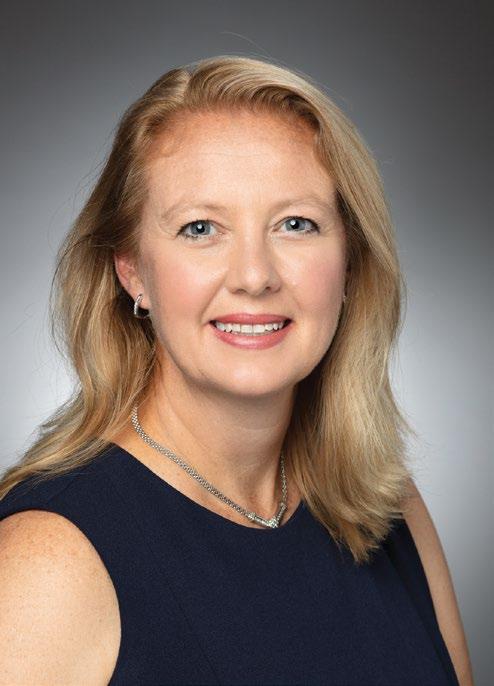
screen in the house for viewing content.”
CTV and smart TV capabilities are already being pushed forward today for viewers and for media companies that now have more ways to collect data and commercialize their services. Lone of AWS cites Warner Bros. Discovery, which has customized real-time show and movie recommendations for unauthenticated users.
“TVs have become more capable and interactive and that’s eating into some of the territory PCs formerly had,” Jones said. “Interactivity is across all devices and smart TVs are just one [option]. They are at the lower end of capability but they are still the primary
“The advent of CTV has brought new monetization opportunities, with more interactive ads, shoppable experiences and personalization around the viewing experiences,” she says. “There’s also the capability for enhanced analytics and real-time viewing metrics, which will allow for programming adjustments in near real time to tailor content to what’s resonating with audiences.”
And what resonates with the audience, both in terms of shows and tech, is now even more important in today’s fluid media market. ●

When I write about antennas, readers respond with questions on specific antennas or ask how the antennas I’ve described work (I still get email messages asking about the Gray-Hoverman and UHF rhombic antennas I wrote about two decades ago!). This month, I’ll review some antenna basics that will help you evaluate any antenna, although I doubt any readers are fooled by antenna ads claiming over 100-mile reception. Measurements are great, but an understanding of how antenna elements work will help to evaluate designs just by looking at them!

harmonics using a fan dipole made from copper-clad PC board. While a solid element is best, broadband TV antennas typically use a wire bow-tie or something similar. Larger diameter or thicker elements have a wider bandwidth than thin rods. New designs will have UHF active elements optimized for the post-repack UHF band from 470 to 608 MHz.
Directors—the elements in front of the active element—act as a lens to focus more signal into it. Many directors can be added in front of the active element to improve gain, but as gain increases, bandwidth decreases. For TV antennas, this makes it difficult to obtain significant gain over the entire UHF band with a large number of directors.
Size is important, but the correct size for the TV-frequency band is most important. The simplest antenna is a half-wave dipole, and when looking at any antenna—transmit or receive—you should see dimensions close to a half-wavelength at the lowest frequency of interest.
Table 1 (next page) shows the free-space half-wavelength at the upper and lower edges of the VHF and UHF TV bands. The element’s actual half-wavelength will be affected by surrounding elements. In a band, the antenna’s active element, the one connected to the coax or balun, should be close to half a wavelength. Combination VHF/UHF antennas will have multiple active elements to cover different bands.
Impedance match for receive antennas isn’t nearly as critical as it is for transmitting antennas, but it will impact signal level, particularly with a long cable between the antenna and the amplifier or tuner. Notice the difference in wavelength in each band. Ideally, the antenna will provide a reasonable impedance match across the TV channels. In addition to size, this is an area in which a look at the antenna can provide some clues.
At UHF frequencies, a fan dipole, like those seen on bow-tie antennas, will work over a wide frequency range. Decades ago, I made a test antenna to evaluate radiated TV third
Elements with different lengths can be connected to increase bandwidth. Log-periodic antennas do this and offer excellent bandwidth. The “Silver Sensor” indoor antenna, popular when DTV broadcasting started, is one example. You’ll sometimes see multiple dipoles connected to improve VHF performance in an antenna. Note that in these cases I’m talking about active antenna elements—ones connected to the coax or matching network, not the directors or reflectors in front of them.
What about those directors and reflectors?
A perfect reflector behind the active elements should double the signal into the element. For a TV antenna covering the entire UHF band, a single rod reflector isn’t going to be as effective as a screen with multiple rods or a wire grid.
The gain of an antenna is directly related to its directivity or beamwidth. When evaluating antennas, do not include gain from amplifiers. A high gain antenna will require more careful aiming and could be a problem if the TV stations to be received are not in the same location. Gain can be achieved by reducing the azimuth (side-to-side) or elevation beamwidth (up-to-down) directivity. Receive antennas will reduce both to achieve higher gain. Most gain in high power TV transmitting antennas comes from a narrow elevation beamwidth.
Let’s use some antennas to illustrate these points.
An example of an antenna that depends on the reflector for gain is the Scala Paraflector. These are used at frequencies from 450 MHz to over 900 MHz for both reception and transmission. The PR-TV operates in the

UHF TV band and has over 16 dB gain at channel 36. It’s a simple antenna, with only two elements in front of the reflector and a very narrow beamwidth. It also has a narrow bandwidth so the desired frequency needs to be specified when ordering the antenna.
Channel Master claims a gain of 12 decibels for its 8-bay “EXTREMEtenna 80” bow-tie antenna. This number appears to be the sum of 9 dB from the 8 active elements and 3 dB from the reflector. The basic design is simple (broadband elements and a reflector) so performance shouldn’t vary much over the UHF TV band.
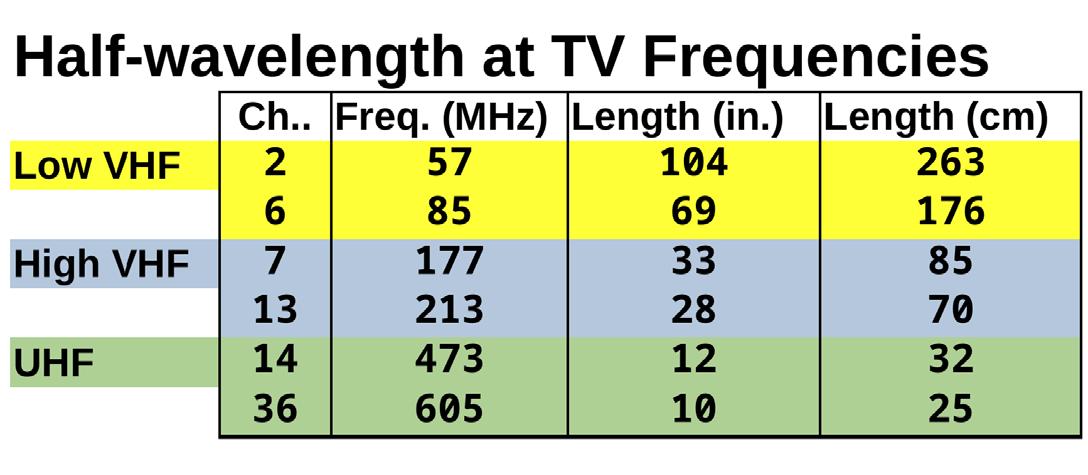
three levels of directors arranged to focus energy from the upper and lower directors into the UHF active element. The active UHF elements on both the RCA and Televes antennas don’t taper to a point at the center like traditional bow-tie antenna elements. Elements no longer have to work up to channel 69 (806 MHz), so having more area at the lower channels improves performance.
A low-cost TV antenna that’s widely available is the RCA ANT705E and, at less than $50, it performed impressively. As you can see from the image, it has a curved reflector and a wider active element shaped like two horseshoes to cover the UHF band. There are only two directors.
Using our size criteria, the only element that will be significant at VHF is the large folded dipole in front of the reflector. The
UHF active element may help a bit as a VHF director, VHF but I doubt the reflector will have much impact. I no longer have my Los Angeles apartment for testing antennas over a wide range of channels, so I was unable to evaluate VHF performance.
The Televes Ellipse Mix is an excellent antenna that costs significantly more but worked well in a difficult environment. It has a broadband UHF active element. Like the Paraflector and the RCA antenna, there is also a shaped UHF reflector. Unlike the RCA, Televes added a reflector for VHF at the back of the antenna. Rather than use a long boom with director elements in a row, Televes has
What about indoor antennas? The flat antennas made with copper film on a plastic sheet are easier to stick in a window than the ANT705E. I did some limited testing comparing it with the RCA ANT1120E and Best Buy “Essentials Ultra-Thin” antennas. As expected, the larger RCA antenna provided the strongest signal and the smaller one from Best Buy was the weakest. At UHF channel 36, the difference wasn’t huge. The Onn antenna, at under $25, is the cheapest and the one I’ve been using while traveling. ●
What antennas have you tested? Let me know what worked and what didn’t. Your comments and questions are welcome! Email me at dlung@transmitter.com.

GenAI technologies can misfire in many ways, so human judgment still matters
Artificial intelligence is rapidly becoming a core part of professional decision-making and our personal lives.
Presently, one of the greatest concerns facing AI solutions is termed overcompensation. “Overcompensating AI” means that when inappropriate prompts are sent to the AI engine, the system may produce overexaggerated responses or the funneling of the wrong dimensions, which generates an inappropriate solution. Issues like overcompensation highlight “the challenges of building and deploying AI systems that are both effective and responsible in direction,” Google says.
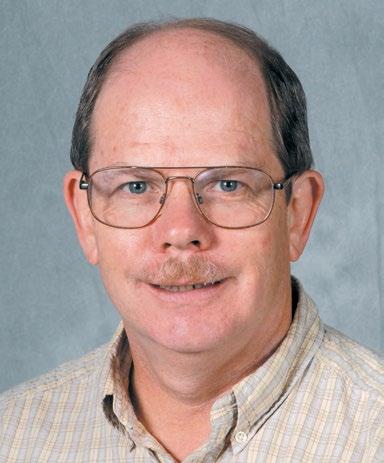
also look at practical solutions commercially available now and used today by many businesses, including the media.
Note that users of any AI should always be aware that uncertainty and challenges should always be expected, and thoughtful user criticism is essential to the output generated by any GenAI product regardless of the application.
Every provider of AI will strive to be “perfect” in its answers to prompts, inputs and inquiries of its systems. But this drive toward perfection might result in what is referred to as “overfitting,” that is, the solution reaching a point where the model it creates becomes excessively specialized.
When decisions rely too much on AI, there becomes a safety factor (i.e., an “overreliance”) that can stem from factors like “automation bias.” When users favor AI-generated information or lack a thorough understanding of the system limitations, studies have shown that people may find the AI suggestions sufficient or satisfactory and may tend to go outside their own judgment—even in high-stakes situations.
AI is great at objective assessments. It can easily filter and sort information based on metrics, which helps streamline specific tasks. However, when subjective judgment is required, human intuition is still superior.
This article is a follow-up to those discussed in my April column, “Uncorking AI.” The purpose of this extension is to alert potential users that “false” outputs can be created from excessively biased or wrong data models that could have been generated before the current user started their prompts or sessions. AI learns by succession: It is trained by previous data sets composed of varying inputs and solutions it generates.
In addition to the examples herein, we’ll
This action may result in what the industry sometimes calls “hallucination.” In such cases, the details of products in their model may be camouflaged (i.e., hidden) to the user, and later the data model may be found to contain training data that, in turn, causes output solutions to perform poorly on new or unforeseen inputs (prompts).
In trying to reach “perfection,” the models and the outputs produced from those models can lead to “overfitting.” In other words, when or if a model becomes overly specialized and dependent solely on its training data—without a broad enough set of data points—it struggles to react appropriately to new or unexpected inputs from the user.
When the system overcompensates or has an overreliance bias to its data sets or models, implementations further downstream can result in continual misguidance to the outputs it provides. Thus, any AI system requires a balanced approach combining capabilities with human oversight and critical thinking.
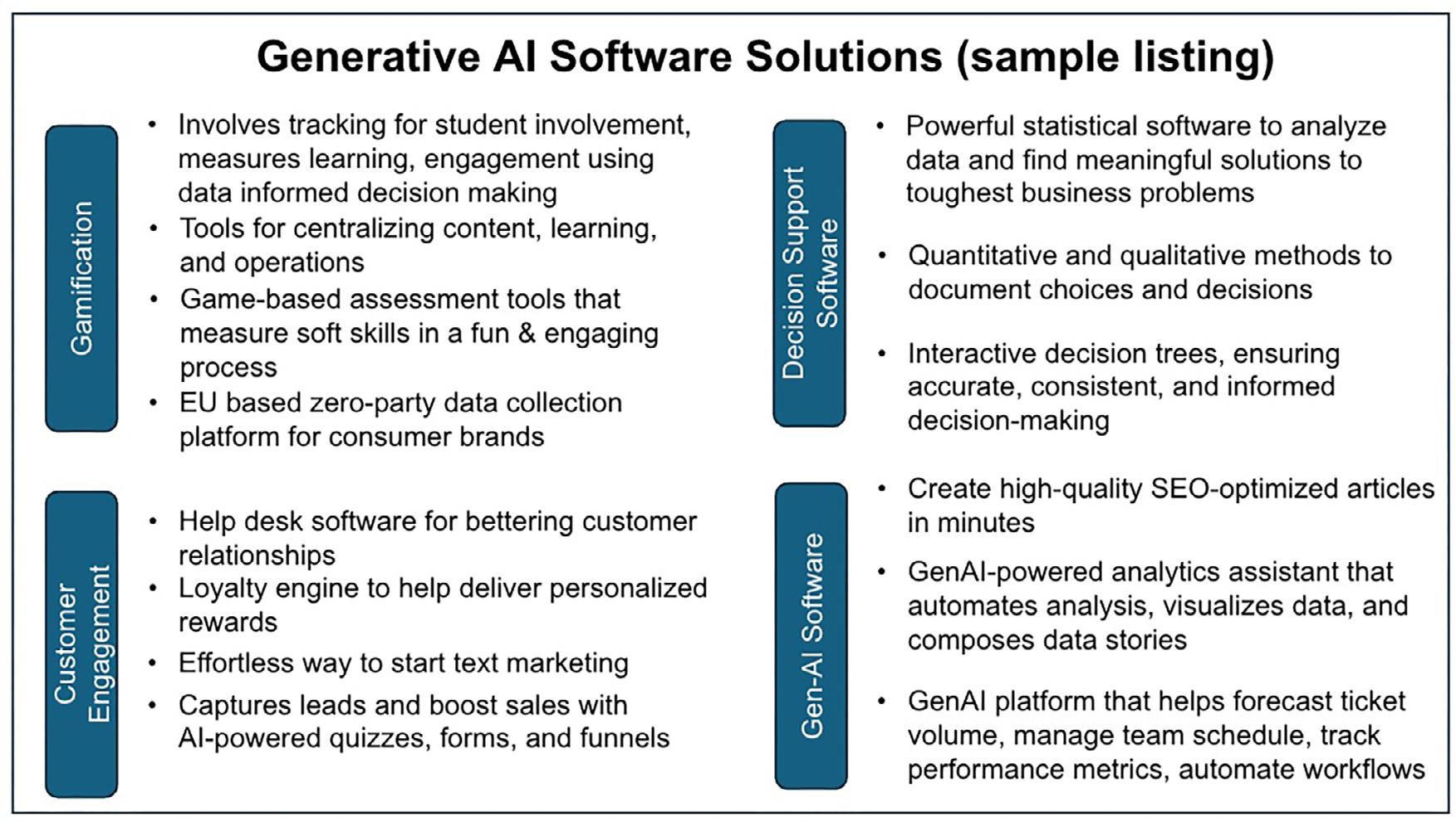
Research supports the idea that AI should best act as an augmentation tool. Reasoning by humans should routinely be incorporated into decision-making instead of simply replacing it. This process further “trains” the AI model while protecting decisions appropriately. Through Objective Assessments, which utilize AI, organizations can still free up human capacity for less-intensive decisions built typically on excessive efforts.
Subjective judgment may sometimes be required, in which case, human intuition is still superior—at least until such time that the computer solutions can better mimic
the human brain in function and in performance, something that is still likely a decade or more away.
When properly navigated, AI helps people to make informed decisions without depending on subject-matter expertise. A collaborative approach involves experts who can critically evaluate AI “suggestions” instead of just accepting them without further analysis as “true without question.”
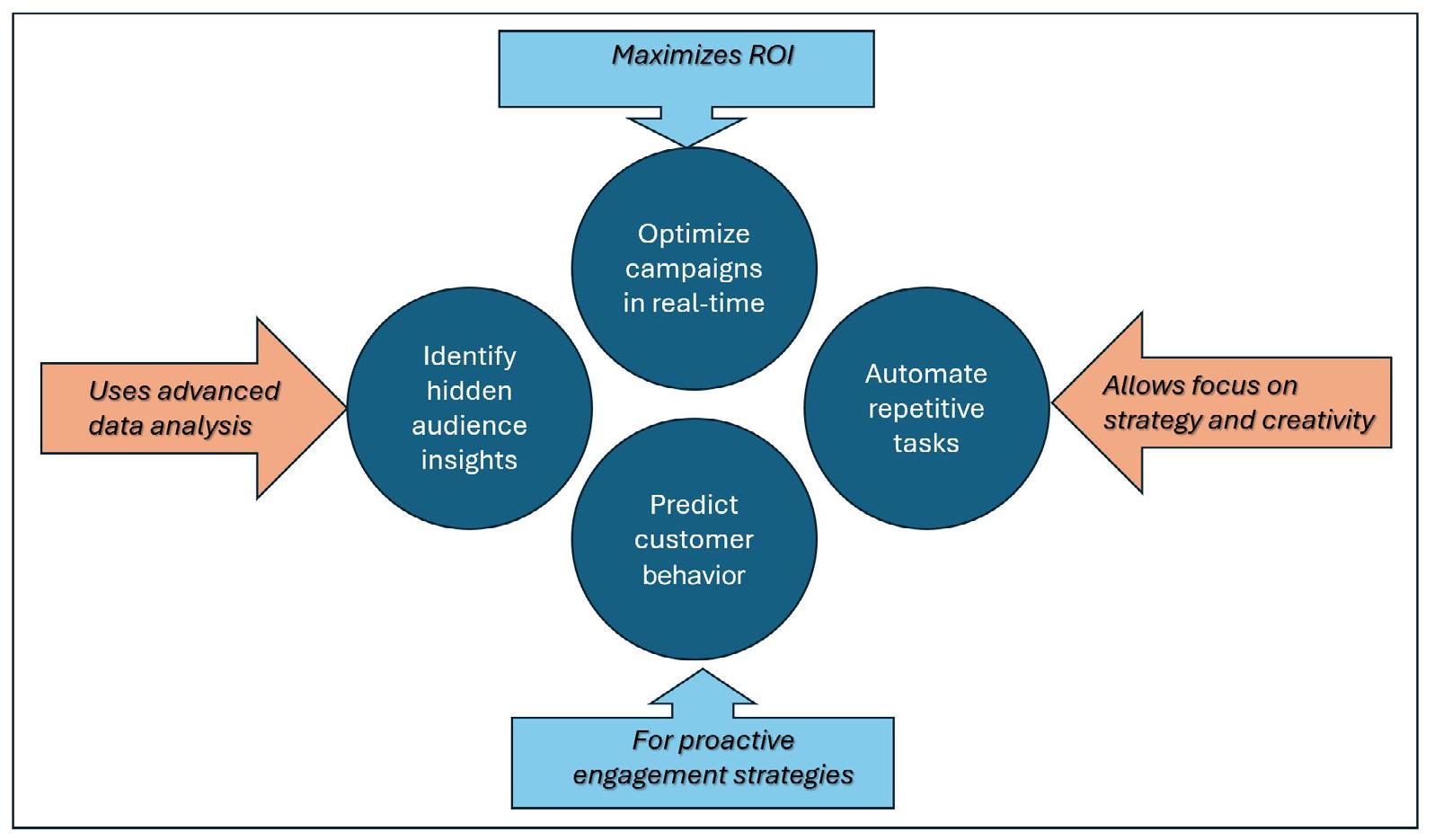
AI tools are constantly being created by leading software providers; without elaborating too far—some include Canva, Microsoft Co-Pilot, Grammarly and OpenAI’s ChatGPT (developed in November 2022). Such tools range from Large Language Models (LLM) to natural language, and to software generation and translation tools across multiple programming languages.
Software categories are quite broad—a small sampling of examples is in Fig 1. When choosing AI tool sets, it’s critical to consider factors like the specific use case, the software’s accuracy and performance, its data privacy and security measures, and the available training and support.
According to leading engineering and consulting firms, as much as 80% of an IT department’s budget can be consumed addressing outdated systems. Modernization is no longer just about efficiency, according to a report by Cognizant. Large-scale AI adoption will amplify the ability to rapidly respond to change.
Reaction time to market change can be improved and will allow the IT department to “innovate” instead of continuing to just “run” to stay up to date. To succeed in the AI age, we must, in turn, leverage technology and “overcome the tech debt that hampers innovation.”
The world’s growth and marketing playbooks are currently being rewritten. Marketing is now using AI “to do” and not to just “think.” To reach such goals with AI, an understanding of AI Optimization (AIO) will become essential to ranking on search engines.
“Ranking” refers to the position of a webpage in the search engine results pages (SERPs)
when a user enters a query. Ranking allows for increased visibility, more traffic to the web pages, and the potential for conversions—that is, more users taking desired actions such as purchases or engaging of a new/improved service. AI is extremely useful in helping a website developer improve results by supporting the best practices for search engine optimization.
Defining, in part, what a “growth playbook” means is that there is now a fundamental shift in how today’s dynamic business environment is going to achieve and sustain growth. Businesses must now rethink and adapt their methodologies (Fig. 2). This goes well beyond what a few years ago was termed a “digital transformation”—as it means tools created for growth—especially AI—are now routine and these tools are now necessary to stay ahead of the curve.
Businesses are now shifting to an agent-centric operations model that will, in turn, collapse their operational and data silos, while moving toward designing systems that think, act and scale with intelligence. AI has become essential to this rapidly changing business model.
Streamlining the operational model requires shifting from individual (siloed) functions and/ or departments to a set of consolidated, semiautomated and anti-autonomous operations that provide continuous operational improvements, reduced time to obtaining the solution, and cutting costs while simultaneously making customer satisfaction and acceptance a “norm” rather than an “occasional” priority.
Companies such as Amazon, FedEx and even Starbucks have all found customer satisfaction improvements by employing “AI agents” to perform tasks which previously required individual
humans in siloed departments to achieve the same tasks. In the case of Starbucks, the company noted its “Deep Brew” program and the newly introduced “Green Dot Assist” are designed to optimize everything from inventory management and customer service to employee training and new product development. The company’s AI platform continually analyzes customer data, including purchase history, location, time of day and even weather patterns, to personalize recommendations, offers and rewards through the Starbucks app.
On the media side, mainstream organizations emphasize the importance of media literacy and verifying sources in this new era of informational warfare—especially where weaponized AI can now produce convincing fake content at low cost. Furthermore, Stanford University has developed research tools that utilize AI to analyze cable news coverage patterns, including detecting faces, identifying figures, estimating demographics and analyzing topic trends. These analysis methods help identify biases and trends in news reporting, including patterns of interruptions in on-air discussions.
Currently, AI is used to analyze thousands of dialogues on cable news programs to better understand the nature of interruptions in political discussions. “Interruptions” are when a speaker is saying something and is cut off by someone else who goes on to express their own thing, leaving the former embittered. The psychology of such interruptions are then cataloged, analyzed and used to train others (e.g., reporters or producers); using AI to better inform, criticize and prepare an interviewer on how to mitigate the negative impacts of such interruptions. These are just some of the myriad value propositions of AI in the business world. Stay tuned to this column in future issues on how to better understand and use AI in your business or media applications. ●
Karl Paulsen is a retired CTO and a frequent contributor. You can reach him via TV Tech or at karl@ivideoserver.tv.
By Brenton Henry Founder and CEO Front Row
FORT WORTH, Texas–At Front Row, our mission is to redefine entertainment by pushing boundaries and mixing imagination with innovation. One of our regular productions is the quadrennial Van Cliburn International Piano Competition, a 21-day event and one of the most prestigious contests in classical music.
The 2025 edition delivered more than 130 hours of multicamera 4K HDR coverage over three weeks. The preliminary and quarterfinal rounds took place at Van Cliburn Concert Hall at Texas Christian University, with the finals at Bass Performance Hall, all in Fort Worth.
The broadcast for each Cliburn competition gets a little bigger and, along with our producing partner Framework Productions, we try to push the envelope more each time, both technically and creatively.
seven or eight different editing stations, all working off the same Cloud Store Max, by providing the “air traffic control” we needed for efficient collaboration.
We managed Dropbox deliverables for media outlets and distribution partners, including “The Cliburn” YouTube channel, local television, Chinese distribution partners and Medici, the largest classical music platform in Europe. We ran Blackmagic
cations of running hard drives between multiple locations.
We still created hard-drive backups, but even that was simplified: connecting via a 10G cable to the Blackmagic Cloud Store 20TB allowed overnight transfers, replacing the usual scramble to clear Solid State Drives (SSDs) for the next day’s show. We were able to completely eliminate the bottleneck of SSD transfers and having five or six

Between recent competitions, we solved some workflow problems, but we also upgraded to 4K, doubling the data rates and creating a new challenge, because storage is very expensive. By leveraging Blackmagic Cloud, we recorded directly to a Blackmagic Cloud Store 20TB and enabled point-to-point remote offloading to our post facility with Blackmagic Cloud Store Max 48TB.
At the facility, a Blackmagic Ethernet Switch 360P ensured seamless performance across
Cloud for our ProRes files and high-resolution ISOs, which were live-synced to our backup facility, while smaller deliverables synced via Dropbox.
With nine 45-minute shows plus 2.5-hour line cuts, ISOs, etc., the ability to have a complete set of “transferred” media immediately after each segment saved us hours of 4K transfer time. Orchestrating both Dropbox and Blackmagic Cloud deliverables streamlined the entire process, removing the compli-
decks of content that had to be dropped. The peace of mind of having all those programs in the cloud the entire time was amazing. For the first time ever, I didn’t worry about the safety of our media.
It was also a game-changer from a disaster recovery perspective, since everything was backed up immediately. It made our media manager’s job so much easier, because he could start or-
ganizing and naming everything, focusing on more important tasks instead of spending hours copying files.
Looking ahead, we are already anticipating replicating the workflow at the junior version of the competition in 2027. The Blackmagic Cloud workflow enables us to do so much more in terms of remote media management, simplifying the process and reducing the number of people that are onsite in the control room.
This year marked our most successful distribution strategy to date, thanks to the freedom we had to focus on our content delivery rather than worrying if the media was where it needed to be. With Blackmagic Cloud at each and every step of the way, the entire workflow was streamlined end-to-end, enabling us to concentrate on telling the story of the competition. ●
Brenton Henry is the founder of Front Row, a St. Louis-based company pioneering immersive video experiences for concerts and sports. An Emmy-winning producer, he has spent nearly two decades shaping how fans connect with live events, from launching one of the first major concert streaming platforms to leading more than 1,000 broadcasts for festivals like Lollapalooza, Austin City Limits and Jazz Fest. With Front Row, Henry is now building next-generation immersive capture and distribution tools that bring audiences closer than ever to the action. He can be reached at brenton@frontrow.co.
For more information, contact Blackmagic Design at 408-954-0500 or visit www.blackmagicdesign.com.
By Greg Inserillo Deputy Editor for Multimedia Newsday
MELVILLE, N.Y.—Newsday has evolved from its roots in print journalism into a multiplatform digital media organization, producing content for print, online, social and live programming. However, with that growth has come significant mediamanagement challenges; more content means more files to be shared and accessed. We needed a faster, more collaborative way to work, improving our file organization and streamlining access to media content across all our departments.
Newsday started using Sony’s Ci Media Cloud platform in 2021, when remote collaboration capabilities were becoming particularly vital to our operations, especially coming out of the pandemic. Almost immediately, the benefits were clear: centralized organization, cross-departmen-
tal accessibility and increased speed, all crucial for covering both breaking news and longterm projects.
Ci accelerates the entire news production cycle from initial capture in the field to final delivery. Anyone in our organization can easily find and use media assets through a single, well-organized hub.
We had been using an on-premise server and FTP client; essentially a giant hard drive with folders, which meant metadata was limited and organization was always a challenge. Before any file could be shared, it had to be uploaded, downloaded locally, exported and then reuploaded, with every step taking valuable time away from our teams. Ci replaces that entire chain of steps with one streamlined process—it’s notably faster. Organization has improved dramatically. We generate about 20 file requests daily and gather more than 600 files from the field. Ci’s metadata tools
keep everything structured and searchable, and we can tag, label and organize massive volumes of video clips with precision. That helps us find what we need quickly, a critical capability when covering breaking news. Using the File Request feature, photographers in the field can preload content with all the right labels, which saves us enormous time once it hits the system.
Ci supports our direct fieldto-cloud workflows, making it a central part of our modern breaking news strategy. We commonly feed live video directly from camera backpacks in the field into the cloud platform. This ability proved invaluable during coverage of a high-profile courtroom case, when Ci broke down workflow silos between field and studio crews.
We streamed two live camera feeds directly into Ci, giving TV and print teams real-time access to footage. Newsroom staffers who weren’t on site could watch press conferences as they happened and update their stories on the spot. In another instance, a video editor
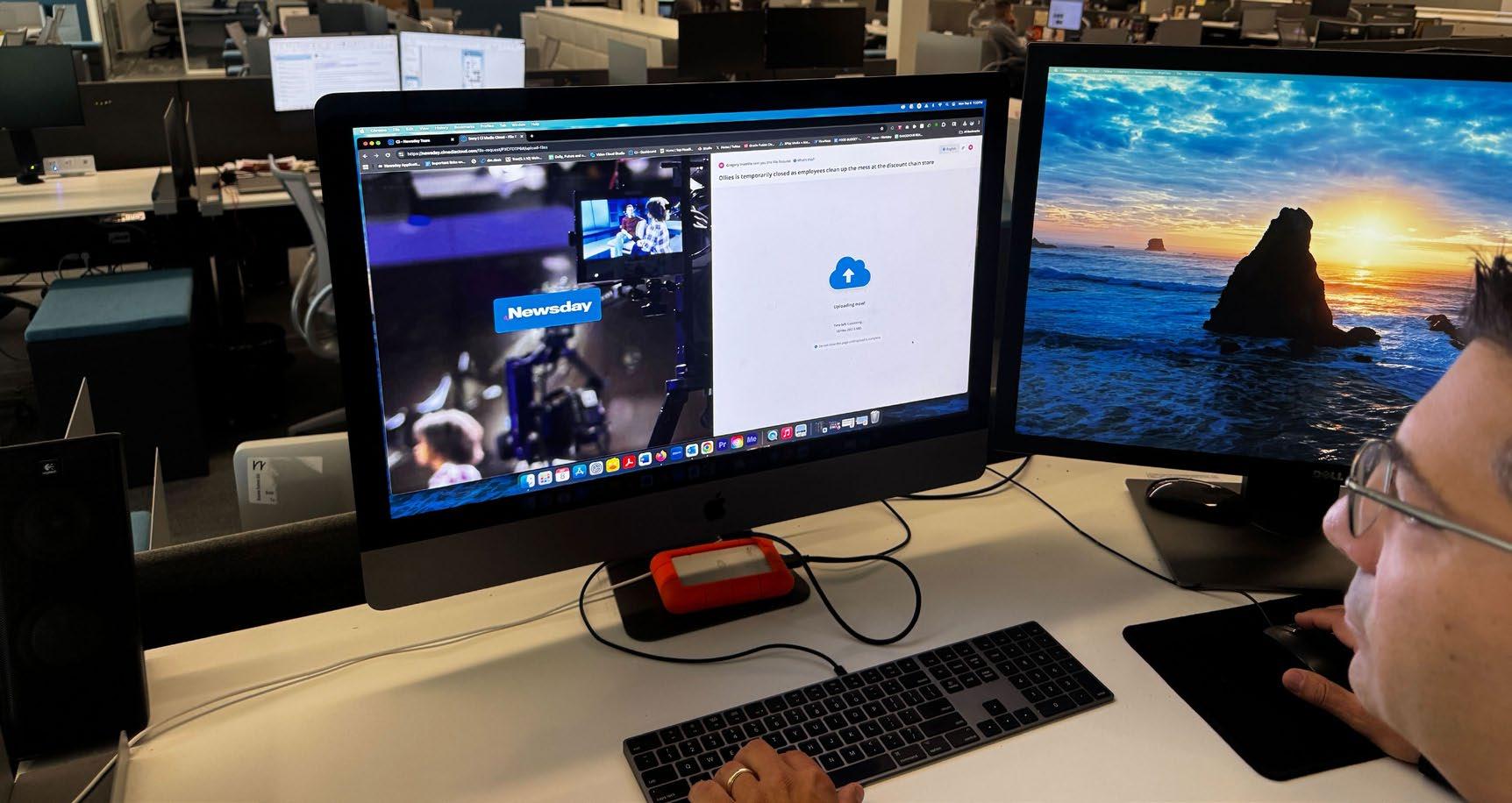
cutting a story in the field needed a clip from the original arrest of a suspect. With Ci, they instantly located and downloaded the footage, with metadata. That task would have been nearly impossible using our old system.
Ci also makes for seamless collaboration across long-term projects. Some of our stories unfold over months, even up to a year. With Ci, we can build shared folders and group assets in a way that makes it simple for different reporters, editors or producers to step in at any stage. The handoffs are smooth and no one wastes time trying to track down files.
Over the past four years, Ci has grown with us as our newsroom has evolved into a multiplatform digital media house. Ci isn’t just a tool we use; it’s part of how we work every single day.
Ci bridges the gap between every part of our newsroom: print, TV, web, social and marketing. It provides universal access to our media and enables a unified, collaborative workflow. Sony’s Ci functions as more than a media management system; it supports nearly everything we do as a modern digital newsroom. ●
Greg Inserillo is deputy editor for multimedia at Newsday Media Group, primarily responsible for managing all video assignments and content for Newsday’s website. An award-winning video editor, his editor/producer credits include hard news packages, long-form feature packages and half-hour shows and documentaries. He can be reached at Gregory.Inserillo@ newsday.com
More information is available at cimediacloud.com.
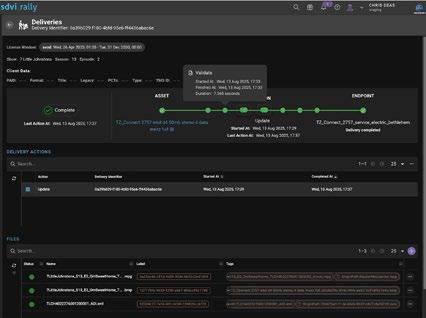
Rally Connect, an extension of the SDVI Rally media supplychain management platform, automates and verifies the exchange of content between media business partners. With Rally Connect, supply- chain architects can select the appropriate template for a desired destination and all media and metadata sent to that end point will be automatically transformed to the destination’s specifications.
SDVI manages the creation and maintenance of endpoint templates, so media companies can leverage the agility and efficiency of Rally supply chains to ensure content reaches its destination exactly as needed. SDVI has built more than 60 templates in Rally Connect, including Prime Video, Apple Transactional TV and Film (iTunes), Dish/Sling, Hulu (SVOD and MVPD), Pluto, Roku, Tubi and YouTubeTV. It also has a CableLabs delivery framework.
https://sdvi.com
EditShare’s FLEX
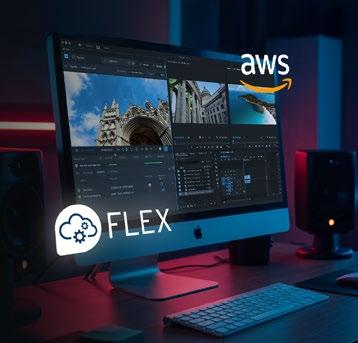
Cloud enables collaborative postproduction entirely in your own cloud account, giving teams on-demand scalability for storage, compute and user access. It integrates with Adobe Premiere Pro, Avid Media Composer and DaVinci Resolve, so editors can keep working in familiar tools. FLEX combines high-performance cloud storage, built-in media asset management, and virtual workstations with automated workflows that keep projects moving under tight deadlines. FLEX Cloud Sync keeps on-premises and cloud storage in lockstep.
EditShare was also a launch partner for the new Modular Cloud Studio on AWS, which connects best-of-breed production tools in a unified environment. This allows FLEX users to extend their cloud pipeline with complementary AWSbased services and leverage Modular Cloud Studio’s streamlined setup, making it faster than ever to deploy a complete cloud production workflow.
https://editshare.com
As Lawo’s HOME Apps and Flex Subscription credits see rapid adoption, the intelligent and flexible HOME Multiviewer app allows users to share a generic server with audio and video processing apps that meet the most stringent broadcast requirements.
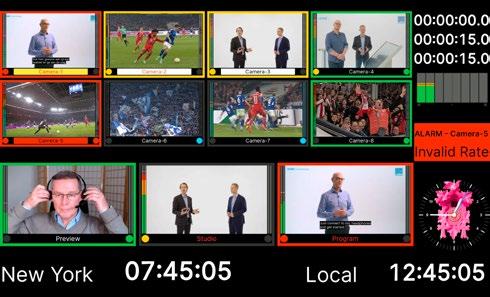
Developed from the ground up to run as platform-agnostic software on generic on-prem servers and in the public cloud, HOME Apps shift the paradigm of what broadcast infrastructure is and how it can be used today.
The ability to use completely different HOME Apps at different times of the day or night—for a fixed, predictable subscription budget—appeals to broadcasters and AV operators moving away from dedicated hardware into cloud-based workflows. In addition, with Lawo Workspaces, platform-agnostic control of mission-specific HOME Apps is now possible from any mobile device, laptop or even AR headset.
https://lawo.com









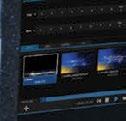

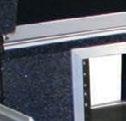

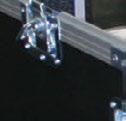












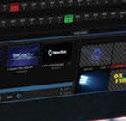



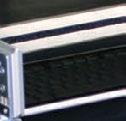
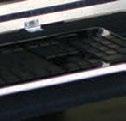


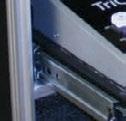







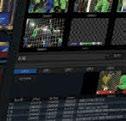
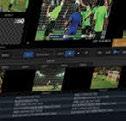
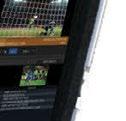



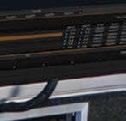



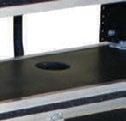


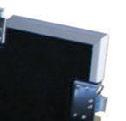



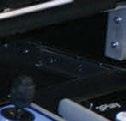










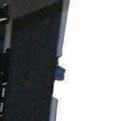


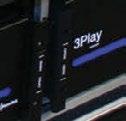
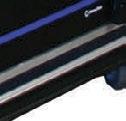


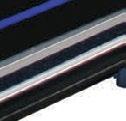
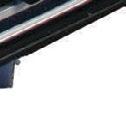






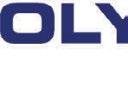




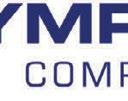
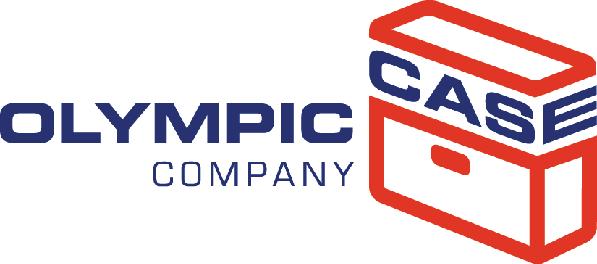

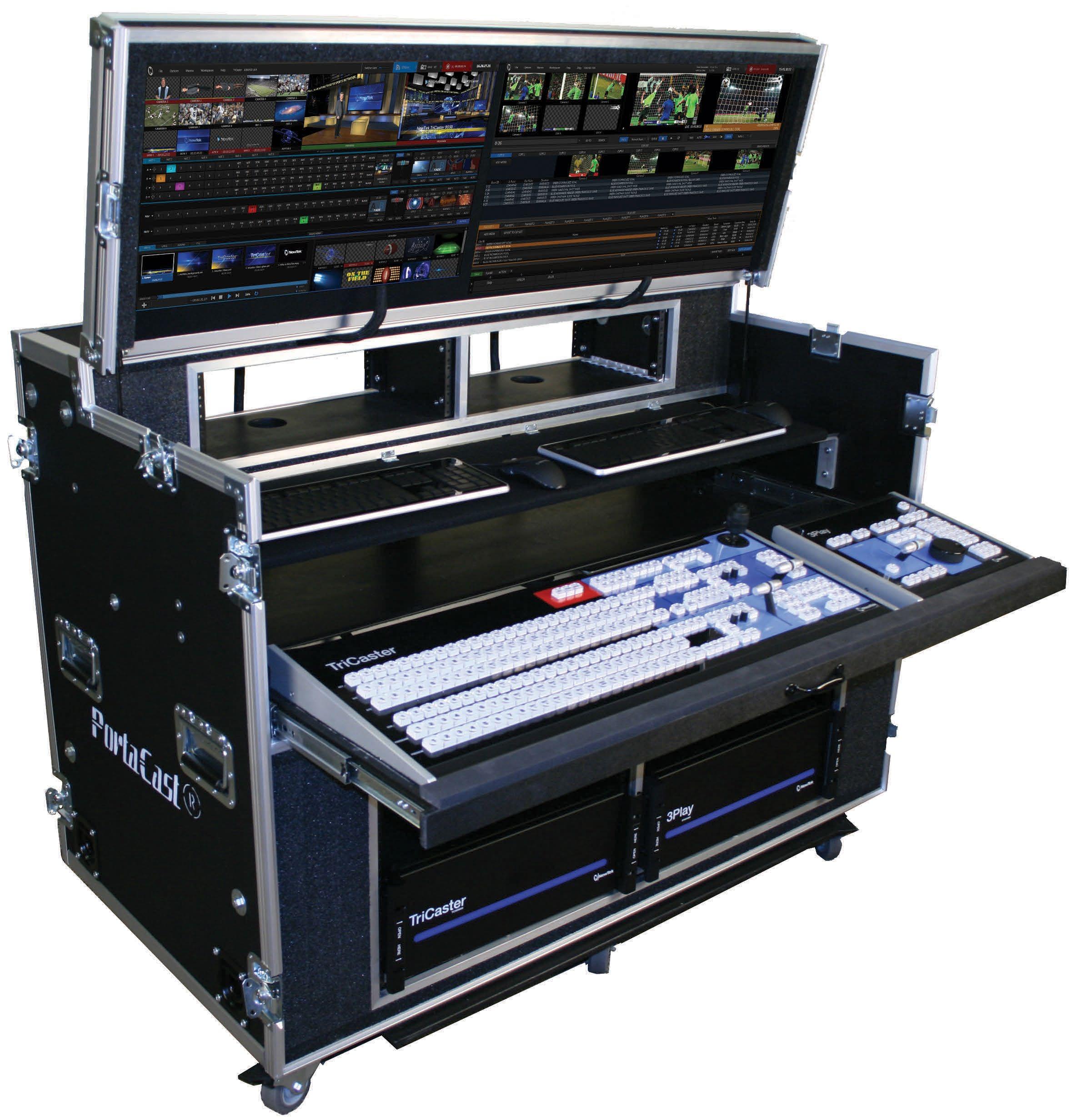
workflow that combined our trusted on-prem infrastructure with the scalability of the cloud.
By H. Scott Randol Vice President, Technology & Workflow MAX Post
BURBANK, Calif.—In postproduction, speed and reliability are everything. At MAX Post, we provide full-service editorial, transcode and ingest, color grading, sound mixing and finishing services for some of the most recognizable unscripted television and documentary programs on the air today.
Our clients expect polished results on extremely tight deadlines, and that means our workflows have to be both flexible and rock-solid—there’s no room for error.
One of our biggest recent challenges came with a client who was filming on location in Argentina, collaborating with a Los Angeles-based postproduction team. The distance alone made it impossible to move media quickly enough for same-day editorial.
Traditionally, we would have relied on digital imaging technicians to create proxies on-site using prosumer desktop tools, then upload those to our facility. That process, however, was time-consuming, resource-intensive and simply not fast enough for the pace of this particular production. In the best-case scenario, it would have taken 72 hours before editorial could even begin. Even using file acceleration tools and on-prem transcoding, we were still looking at a full day of delays. For this client, speed was critical.
That’s when we partnered with Telestream to build a hybrid
The centerpiece of this solution was Telestream Vantage Cloud, which became our remote transcoding engine. We reoriented the pipeline around cloudfirst ingest of camera masters, automated dual transcodes and selective, policy-driven retrieval.
Instead of relying on proxy creation in the field, the field team uploaded camera masters directly to the cloud. Vantage Cloud automatically picked up the files and performed dual transcodes, creating both high-resolution and proxy versions. The real innovation came in how we managed those outputs. Working with Telestream’s Professional Services team, we optimized the workflow so that only the low-res proxies were downloaded immediately for editorial. The high-res masters stayed in the cloud, available on demand.
Back at our facility, those proxies were rewrapped in our on-prem Vantage system and checked into our Avid MediaCentral UX environment. This allowed our editorial teams to keep working with the same familiar workflow, only much faster. When high-res files were needed for finishing or promos, etc., we would download only the needed shots. The rest were trafficked during off-peak hours to conserve bandwidth and reduce cloud egress costs.
This hybrid approach was a game-changer. Even extended camera clips—some as long as four hours—transcoded seamlessly and because we could spin up unlimited Vantage Cloud instances, we easily scaled the workflow to handle up to 10 TB of content per day. What used to
take days was now completed in as little as six hours from upload to edit-ready media, a tenfold improvement in turnaround.
For our client, the difference was night and day. Editors in Los Angeles were cutting footage from Argentina almost in real time, and creative teams were able to collaborate across continents without delay. Not only did the solution accelerate the postproduction timeline, it also saved money by reducing unnecessary data transfers and optimizing storage.
For me, the best part was how natural it felt. From the editors’ perspective, nothing about their workflow changed, except for how fast they could get the work done. Vantage Cloud integrated seamlessly with our Avid environment, so the team could focus on storytelling rather than technical hurdles.
This deployment is now our model for geographically distributed productions: cloud-first
ingest, policy-driven transcode orchestration, proxy-first distribution and selective high-res retrieval. It gives us the best of both worlds: the scalability of the cloud combined with the stability and predictability of our established on-prem environment.
Knowing we can support aggressive schedules without compromising quality or timelines gives us the competitive edge to take on high-stakes projects, no matter the demands. ●
H. Scott Randol is vice president, technology and workflow, at MAX Post. He has worked in postproduction for more than 30 years and has seen MAX Post grow from its beginnings to the company it has become today, supporting a wide variety of productions from high-volume reality TV shows to feature documentaries. He can be reached at Scott.Randol@maxpost.tv
More information is available at telestream.net.
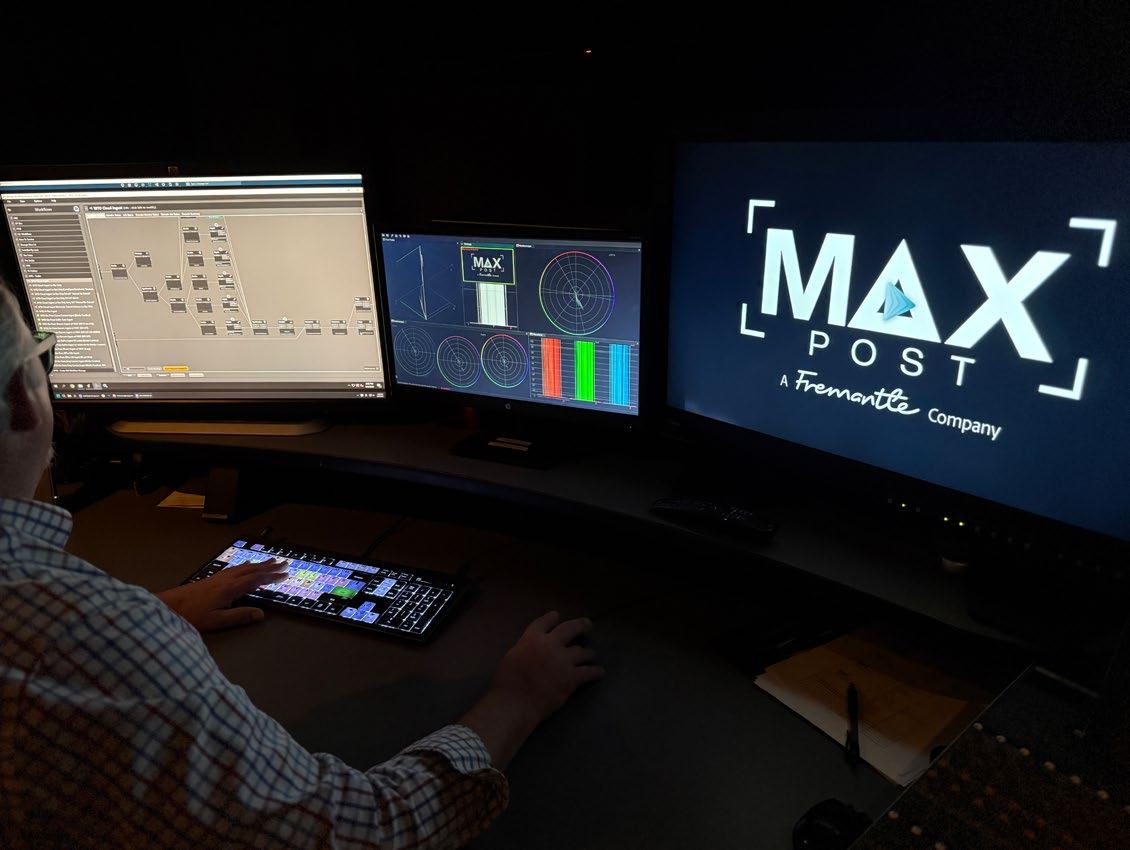
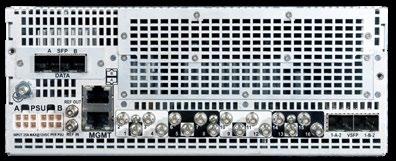
Imagine Communications has expanded its Selenio Network Processor (SNP) line with SNP-XS. This versatile addition packs the power of the flagship SNP platform into a deploy-anywhere form factor. Delivering ultra-quiet operation and high-performance processing in a halfrack, 2-rack-unit footprint, SNP-XS is the ideal solution for edge deployments, remote routing endpoints, mobile production and any environment where space is at a premium but performance can’t be compromised.
SNP-XS offers flexible input/output configurations and runs all 16 current SNP applications right out of the box, including UHD and HDR conversion, multiviewers, master control and JPEG XS — enabling live, low-latency, high-quality contribution to the cloud. Imagine’s integration of JPEG XS compression technology into SNP offers a straightforward, proven solution that allows broadcasters to more easily and economically leverage their IP infrastructure to shift key production tasks to the cloud. https://imaginecommunications.com
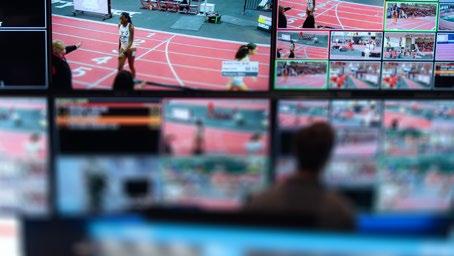
LTN’s Live Sports solution delivers an end-toend live production and distribution workflow tailored to sports broadcasters and rights holders. Designed to streamline operations and reduce third-party dependencies, it integrates signal acquisition, content manipulation and distribution into a single, unified ecosystem. It enables flexible ingest across LTN’s proprietary network, fiber, satellite, SRT and other IP-based protocols, ensuring compatibility with any venue or environment, from major stadiums to remote locations.
With real-time monitoring available through the built-in Watch Portal, users can oversee multiple feeds simultaneously, maintaining signal integrity throughout the workflow. The platform supports advanced video and audio customization for regionalization or audience-specific content delivery, while offering intuitive ad-insertion workflows—ideal for managing dynamic and unpredictable commercial break schedules. https://ltnglobal.com/industries/sports-broadcast

Globecast Content Exchange is a new solution within the Globecast Media Platform portfolio. It integrates satellite, fiber and cloud-native IP workflows into a single hub for acquiring, processing and delivering live and on-demand content on a global scale. It incorporates AI-driven automation, dynamic rights management and an intelligent catalog that enables seamless content onboarding and flexible distribution across platforms.
Content Exchange is designed to support broadcasters, rights holders and media organizations as they respond to changing audience expectations while creating new monetization opportunities. With its hybrid architecture and emphasis on scalability, the platform allows rapid experimentation, fast integration of new formats and channels and streamlined operations, helping customers transform complex supply chains into more efficient and adaptable ecosystems. www.globecast.com
LAPIS (Limitless Advanced Powerful Intelligent System) provides businesses with a central, powerful dashboard from which to search, review, interact and process media and data across a wide range of local, remote or cloud-based storage systems and databases, providing workflow and data access to a myriad of systems that can be connected to it, through a familiar user-friendly interface.
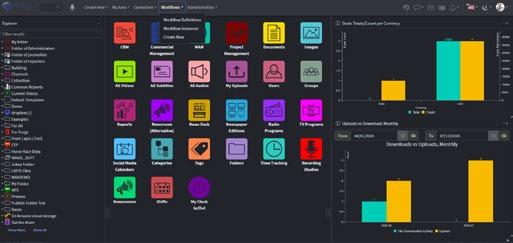
Already adopted by organizations such as Canal+ France, the Council of Europe and Bulgarian National Radio, Profuz LAPIS has the tools and features required to manage multiple TV channels. It’s designed to organize media assets such as movies, documentaries, series, clips and promotions for categorization, advanced searching, filtering, metadata tagging and sorting, by providing centralized, secure and reliable efficiency in one powerful, elegant solution, streamlining workflows and boosting productivity.
https://profuzlapis.com

The Signiant Mobile App brings a new level of flexibility and speed to mobile and cloudbased production workflows. Designed for teams working in the field, the app enables direct, secure uploads from an iPhone to Media Shuttle Submit portals, powered by Signiant’s acceleration technology. Instead of relying on shipping drives or waiting until someone is back at a laptop, field crews, journalists, sports teams and digital creators can instantly move footage into the cloud, where it becomes accessible to editors and collaborators around the world.
This tightens production timelines, reduces idle time and ensures creative teams can begin working on content the moment it’s captured. With built-in security and checkpoint restart, teams gain the reliability they need even on spotty connections. By bridging on-location capture with cloud workflows, the Signiant Mobile App empowers media companies to stay agile, meet tight deadlines and deliver high-quality content faster than ever. www.signiant.com
Imagine this scenario: For a global show on a streaming platform, the production team is relying on the best talent. One editor is in London. One editor is in New York. Both need to collaborate simultaneously as the project is on a tight deadline. Should the edit be based in London or New York?

Neither. Users can base the editing process in the cloud with Avid on AWS. With high performance Avid NEXIS shared storage and Media Composer edit clients running in the cloud, efficient global content production is possible. The partnership between Avid and AWS eliminates geographical challenges, reduces operational costs and enables teams to focus on creativity, not technicality. With enterprise security built in and streamlined procedures to get teams up and running quickly, the combination of AWS and Avid gives teams an innovative production ecosystem with familiar, proven workflows. www.avid.com/avid-on-aws
By Bryan Moore Vice President, Digital Media and Aerial Production Terrible Herbst Motorsports
LAS VEGAS—Terrible Herbst Motorsports is an established name in off-road racing with a history that spans generations of the Herbst family. The Las Vegas-based team has earned multiple SCORE Trophy Truck championships and is recognized for vehicles such as the Monster Energy Ford F-150 and the influential Herbst Truggy, which helped shape modern desert racing. Known for both consistency and innovation, our team continues to compete in some of the sport’s most demanding events across Baja California and the American Southwest.
As vice president of digital media and aerial production at Terrible Herbst, my role is to capture the race while also expanding the boundaries of what can be achieved in live streaming. These races, which take place six times a year, unfold across arduous terrain, with 850-horsepower trucks reaching speeds of 150 miles per hour. Streaming them requires helicopters, off-road trucks and connectivity across remote locations—all operating in real time, which challenges traditional broadcast models. Still, we’re determined to advance the fan experience, and that’s where TVU has been essential.
Prior to adopting TVU Networks’ cloud-production tools, we relied on large production trucks—expensive to operate and requiring extensive on-site crews. For the 2025 Baja 500, we
implemented a remote, cloudbased workflow using TVU Producer, TVU MediaHub and TVU Anywhere.
Producer-enabled live multicamera switching in the cloud, with feeds ranging from in-truck cameras to aerial footage from helicopters and truck-mounted angles. All signals were routed and managed through MediaHub, with additional mobile feeds contributed via TVU Anywhere, giving fans a richer, more immersive experience.
Once in MediaHub, we converted SRT streams from the cameras into RTMP, allowing us to distribute the broadcast across social platforms, YouTube Live, and our own website (terribleherbstmotorsports.com). Executing this through a cloudbased platform allowed us to leverage remote operators across the U.S.—ensuring we can deploy our A-team every time.
Using Starlink and TVU solutions allowed us to enable innovation in the cloud, from the cloud.
Given the extreme remoteness of desert racing, we equipped trucks and helicopters with rack-mounted cameras and fitted the aircraft with Starlink for high-speed, mobile internet. The combination of Starlink and TVU has kept our live feeds stable, sharp and compelling.
We’ve even seen growing external demand for our proprietary, patent-pending helicopter mounts and power conversion systems for Gen 2/Gen 3 performance Starlinks. Through combining TVU’s remote production tools with advanced connectivity solutions, we’ve brought highspeed desert racing to life in a way that was immersive, efficient

and scalable—proving that no location is too remote for worldclass live coverage. Partners like TVU Networks have become integral to advancing live racing. My background in cinematography has driven me to create not just a live stream, but a high-end live show—which is exactly what fans want. We’re excited to see where innovation continues to take us and grateful for partners like TVU that help redefine the possibilities. ●
Bryan Moore is a multi-Emmynominated producer, cinematographer and aerial cinematographer based in Las Vegas. With experience spanning action sports,
automotive and nature filmmaking—including credits on the Gymkhana Films series and “Planet Earth III”—he combines creative storytelling with technical innovation to deliver visually compelling, high-energy content. Currently vice president, digital media and aerial production at Terrible Herbst Motorsports, Bryan is also CEO of his own production company, Drive Media Inc., and partner at TT Aerospace, developing and manufacturing Starlink componentry for aviation and land use. He can be reached at bmoore@ terribleherbstmotorsports.com
More information is available at www.tvunetworks.com.
By Robin Do Director of Product & Engineering, KOCOWA
LOS ANGELES—When we launched KOCOWA, our vision was simple yet ambitious: to bring the best of Korean entertainment to audiences worldwide. Founded by Korea’s leading broadcasters, KBS, MBC and SBS, KOCOWA began in the Americas in 2017. Over the years, it has evolved into a truly global platform, with expansion into Europe, Australia and New Zealand in early 2024.
Today, KOCOWA has subscribers across 73 countries who enjoy their favorite dramas, variety shows, and K-pop programs just six hours after they air in Korea, with subtitles available in English, Portuguese, Spanish, Chinese and Vietnamese.
This rapid expansion has been fueled not only by our dedication to fans but also by our commitment to continuously improving our technology. Dalet Flex, in particular, has become the foundation for building an efficient and scalable operation that supports both our B2C subscribers and B2B partners worldwide.
From the beginning, our goal was to automate content acquisition and distribution to operate with minimal resources while maintaining the highest quality of service. We needed a platform capable of handling the high volume of content arriving from Korea, adapting to diverse business models and scaling globally.
Dalet Flex provided robust, adaptable workflows that reduced manual labor and ensured con-
sistency across every aspect of our media supply chain. With the support of Dalet’s professional services team, we designed and configured workflows tailored to our specific needs. These cover everything from ingesting and processing content to preparing metadata and delivering assets to both B2C and B2B end points. The Dalet team also trained our staff, enabling us to quickly optimize operations.
Today, we have team members across content management, marketing, service operations and engineering who rely on Dalet Flex on a daily basis. This cross-departmental adoption demonstrates just how central Dalet Flex has become to our operation.
In our operations, Dalet Flex automates the entire supply chain. Incoming assets and metadata are acquired, processed and transformed for use on our streaming service. Content is then distributed seamlessly across our B2C platform as well as to our expanding roster of B2B partners. Tasks that once required hours of repetitive manual effort are now handled automatically, allowing our teams to redirect their efforts toward innovation, user engagement and strategic partnerships.
Additionally, the Dalet Flex Publish feature has become indispensable to our content marketing strategy, automatically delivering promotional clips to YouTube, where they engage fans and generate excitement for full episodes.
The impact of Dalet Flex on our operations is clear in terms of efficiency, cost reduction and improvements in the viewing experience. The solution auto-
proving satisfaction and loyalty, while B2B partners benefit from smooth, on-time delivery.
As KOCOWA continues to grow, Dalet Flex will remain a cornerstone of our operation. Our plans include expanding our B2C reach into new territories while also strengthening our B2B partnerships with media companies worldwide. By doing so, we aim to make it easier than ever for audiences everywhere to discover and enjoy the rich, diverse world of Korean entertainment.
Our deployment of Dalet Flex has allowed us to streamline operations and rapidly expand into 73 countries.
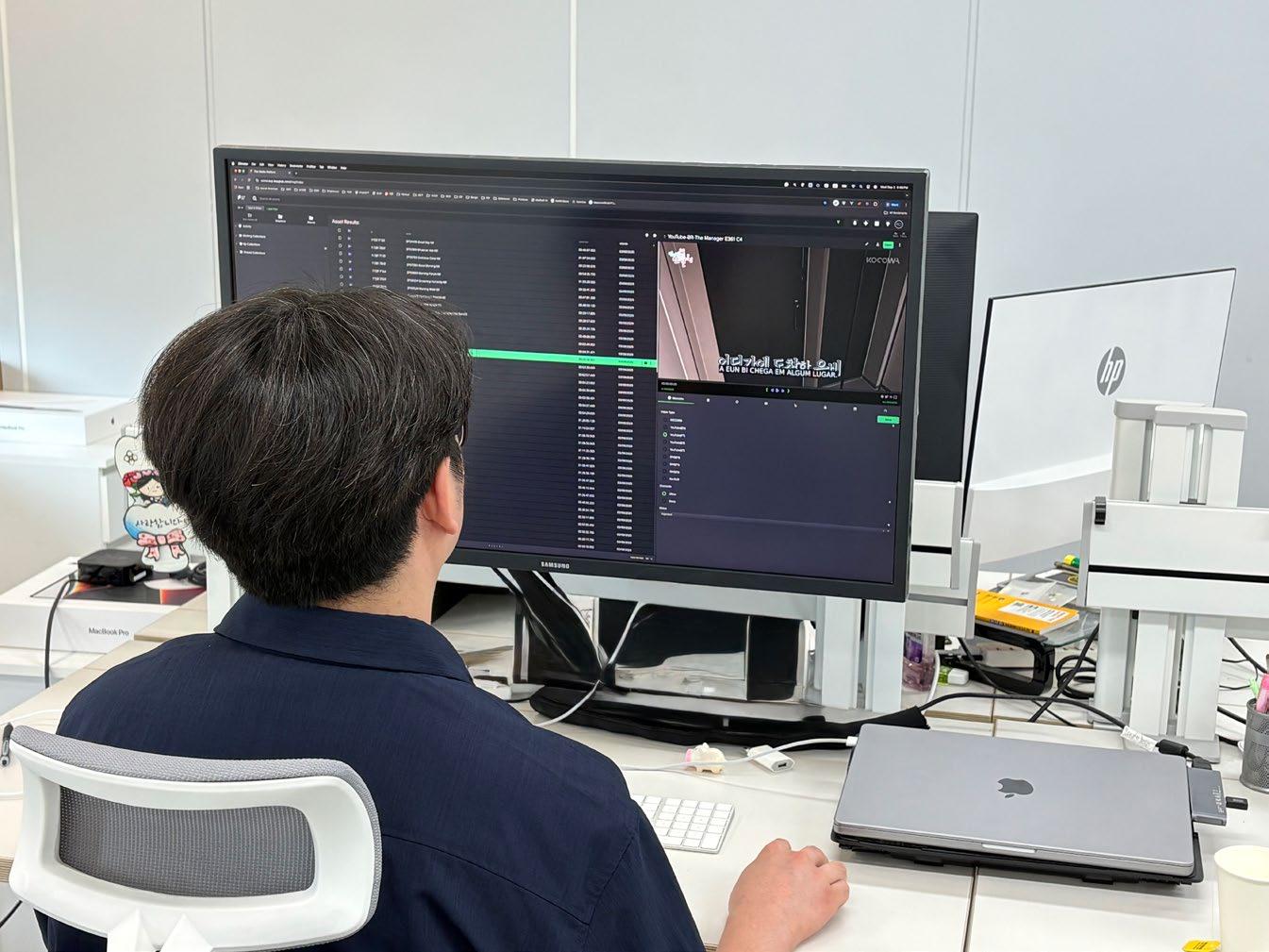
mates and eliminates repetitive manual work, accelerating turnaround and ensuring content is ready for fans within hours of broadcast in Korea.
One of the most valuable aspects of Dalet Flex is the Flex Core. Its flexibility allows us to adjust workflows as business needs evolve, whether we are scaling into new regions or adding distribution partners.
It has also reduced costs. By leveraging automated workflows, we have kept staffing levels lean and operational costs under control, even while serving audiences around the world. In addition, simplified, reliable processes mean that viewers receive subtitled content faster, im-
For us, Dalet Flex is the backbone that enables us to fulfill our mission of connecting global audiences with the vibrant, everexpanding universe of Korean entertainment. ●
Robin Do is the director of product and engineering at KOCOWA. He can be reached at robindo@kocowa.com.
More information is available at www.dalet.com.
By Chris Wells Head of Communications World Archery
LAUSANNE, Switzerland—For years, World Archery—the international governing body for the sport of archery—relied on a complex, third-party broadcast setup to deliver coverage of its 10 top-tier and 40 second-tier events each season. This semiremote workflow involved signal uplinks from competition venues, downlinks and fiber handoffs across multiple countries, and an outsourced master control room (MCR) in Scotland.
Not only was the process expensive and time-consuming to reconfigure for every event, it also often left us with little control over quality, particularly when our content wasn’t necessarily given priority over more regular or higher-quantity projects in the shared facilities.
This year, that all changed. We’ve taken production and distribution fully in-house, centralizing our entire live workflow at our Lausanne, Switzerland-based Excellence Centre and powering it with Appear’s award-winning X Platform.
The move has transformed the way we operate, improving reliability, enhancing quality and cutting costs, with an expected payback period of just 18 months.
Our previous satellite-centric model was cumbersome. At each venue, we uplinked to satellite via SNG truck for downlink in London, sent the feed via fiber to Scotland for MCR switching, then back to London for final uplink or fiber distri-
bution. We had no dedicated infrastructure and no consistent configuration—archiving was fragmented and scaling the operation down to lower-tier events was prohibitively costly, stunting our ability to grow.
Today, thanks to Appear’s X20 chassis equipped with Secure Reliable Transport (SRT) modules, decoders and multinetwork management, we send high-quality SRT feeds straight from the venue to Lausanne over IP. The Excellence Centre receives, decodes and redistributes them via IP to more than 20 global media partners, from regional broadcasters to streaming platforms. Redundancy is built in, with parallel IP paths ensuring our distribution hub can maintain service even in the event of an outage. We’ve also largely eliminated the need for RTMP encoders, thanks to SRT’s efficiency and resilience.
Previously, a typical top-tier event required a 10-person offsite crew spread across multiple
locations. Now we run the entire content distribution operation from Lausanne, with just two people, one technical and one editorial. That’s not just a cost saving; it’s a huge simplification of logistics. If we need to add resources, we can—the fully-IP nature of the workflow means that scaling is instantaneous, economic and easy.
Most importantly, we now have full ownership of our signal path. Our output is consistent from event to event and we can make real-time adjustments without depending on a third party’s priorities or availability. And as there’s no cost barrier to adding transmissions, we can scale our offering exponentially. We expect to hit 200 events annually by the end of this cycle—a fourfold increase.
Using Appear’s high-capacity IP platform, we can guarantee predictable quality across all events. Our content now reaches a broader audience, with feeds delivered to more partners more
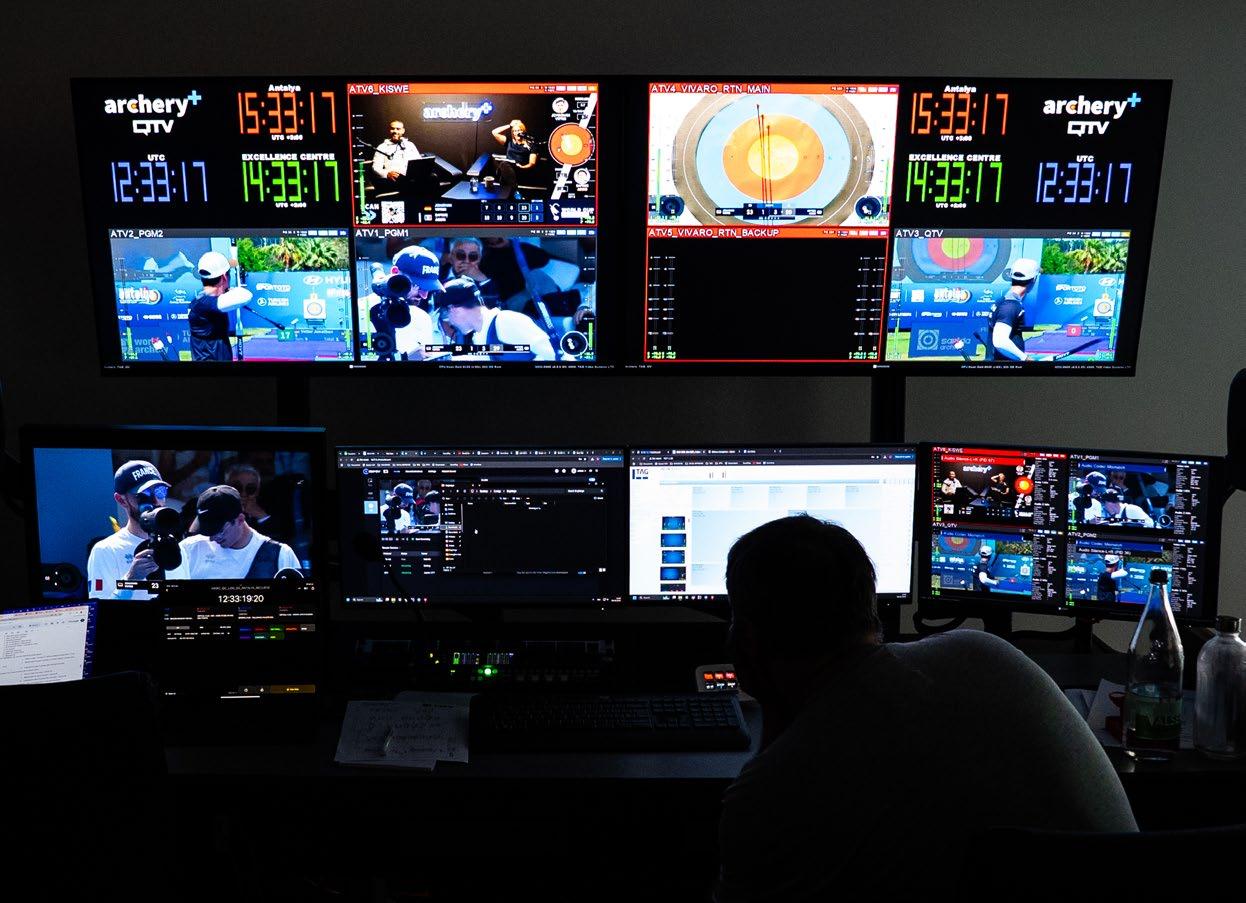
reliably, and often at higher quality than before.
The flexibility of the X Platform also opens the door for future expansion. We’re already exploring adding transcoding and encoding modules to improve contribution quality from our second-tier events and installing Appear X5 units at select venues worldwide to enhance our remote production capabilities. In the offseason, the Excellence Centre may even be used by other federations, creating a new revenue stream.
Appear’s X Platform stood out for its combination of flexibility, density, and sustainability. For a federation like ours, with events in challenging locations and a lean technical team, efficiency is crucial. The system’s modular design means we can add capabilities as our needs evolve, without replacing core infrastructure. By removing the complexity of our previous broadcast setup, we now deliver consistent, high-quality coverage with minimal setup time. Appear’s X Platform has allowed us to regain full control of our content, ensure that audiences worldwide enjoy a seamless viewing experience, and reduce operational costs, all with a payback period of just 18 months. ●
Chris Wells is the head of communications at World Archery. He plays a hands-on role in both the production planning and implementation of the broadcast workflows, which includes direct usage and oversight of the technology. He can be reached at cwells@archery.sport
More information is available at www.appear.net.
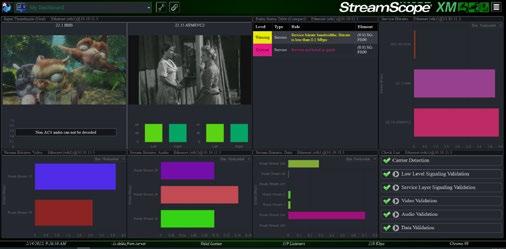
Triveni Digital’s ATSC 3.0 Cloud Software as a Service (SaaS) provides a fully cloud-compatible, end-to-end solution for broadcasters transitioning to NextGen TV. The comprehensive platform integrates all critical components of the ATSC 3.0 broadcast chain, including the company’s GuideBuilder XM transport encoder, Broadcast Gateway scheduler, StreamScope XM Analyzer and Monitor, and Station Manager orchestration and configuration management.
By leveraging the scalability of the public cloud, ATSC 3.0 Cloud enables broadcasters to launch NextGen TV services quickly, efficiently and cost-effectively. Its pay-as-you-go pricing model lowers cost-to-market by reducing capital and implementation expenses, an especially valuable advantage for broadcasters in small and midsize markets. Triveni Digital’s ATSC 3.0 Cloud SaaS is fully interoperable with leading third-party systems. www.trivenidigital.com

Fusion Gateway empowers media organizations to seamlessly connect and exchange content between disparate systems in today’s increasingly cloud-based production environments. Acting as a bridge between third-party media asset management systems and Bitcentral’s ecosystem, Fusion Gateway streamlines workflows by automating metadata mapping, media transfers, and content validation.
Built for AI-driven workflows, Fusion Gateway intelligently analyzes, tags and enriches media, making content easier to search, discover and repurpose across platforms. Its robust, scalable architecture supports high volumes of assets while ensuring secure and reliable delivery between systems, whether on-premises, in the cloud or hybrid workflows. By reducing manual workloads and simplifying integrations, Fusion Gateway enables broadcasters, newsrooms and content creators to accelerate production, lower costs and unlock new efficiencies in an era when speed and flexibility are paramount.
https://bitcentral.com
Haivision StreamHub has been designed to meet the demanding requirements of field-based camera operators and live broadcast producers who need to share live video contribution and return feeds over mobile and IP networks. Supporting both H.264 and HEVC with resolutions up to 4K UHD, StreamHub is the ideal solution for receiving, decoding and distributing live video for remote production workflows.
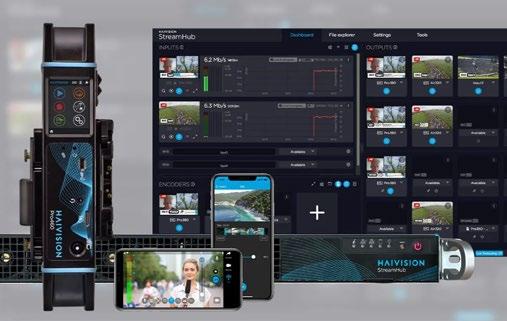
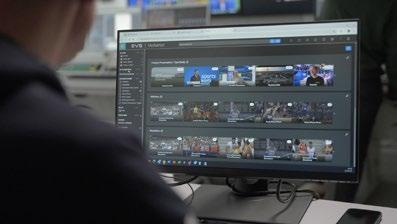
EVS MediaHub, part of the VIA MAP Media Asset Platform, is a secure, cloud-based content application designed to streamline distribution of live, near-live and nonlinear media to rights holders and affiliates worldwide. As a SaaS solution, MediaHub removes infrastructure complexity while centralizing assets in a single interface, saving teams up to 20 minutes per content search request, efficiency validated by customers like RBFA (Royal Belgian Football Association). Through intuitive cloud access, editors and creators can instantly search and retrieve content using advanced metadata and AI-powered face recognition.
MediaHub supports different user profiles and enables various cloud workflows: edit in the cloud, send to postproduction nonlinear editors or publish directly to social media. With scalable archive options and CDN-optimized regional access, MediaHub empowers productions to maximize content monetization and global reach, without the overhead of on-premise systems. https://evs.com/solutions/mediahub
PlayBox Neo Suite is an extensive suite of solutions designed to streamline and enhance the workflows of modern media organizations, including TV channels, satellite operators, content creators and OTT platforms. As a professional media platform, Playbox Neo Suite provides a focal point for any modern media, allowing effortless centralized control, monitoring and administration of an optimized multimedia workflow.

The current line of “Channel in a Box” products integrates seamlessly with PlayBox Neo Suite to get the most from a user’s previous investment and offer a unified interface for future updates to a completely homogeneous ecosystem. PlayBox Neo Suite is a multiuser, multiserver environment that optimizes resources and enhances user experience. The continuously growing number of components offers added functionality and efficiency to any workflow.
https://playboxneo.com
StreamHub can receive live video from any Haivision mobile transmitter, including Pro series units, MoJoPro and LiveGuest. Supported protocols for both incoming and outgoing streams include SRT, RTMP, RTSP/ RTP, TS/IP, HLS and NDI. With an intuitive web-based interface for monitoring, transcoding and managing feeds in real time, StreamHub provides broadcasters with a scalable and reliable platform for managing multiple live video sources across diverse production environments. www.haivision.com

For possible inclusion, send information to tvtech@futurenet.com with People News in the subject line.
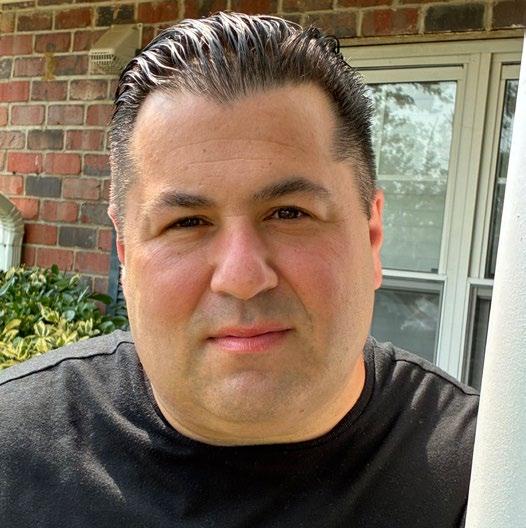
Tom Baldassare has joined Advanced Systems Group as senior account executive. He’ll be tasked with maintaining and developing relationships with Fortune 100 tech and financial firms on both U.S. coasts, the company said. Baldassare is one of the creators of the Silicon Valley Video Summit, held each January and co-sponsored by ASG. In addition to servicing ASG’s current clients, Baldassare will lead a company initiative to cultivate new technology and finance clients in New York City.
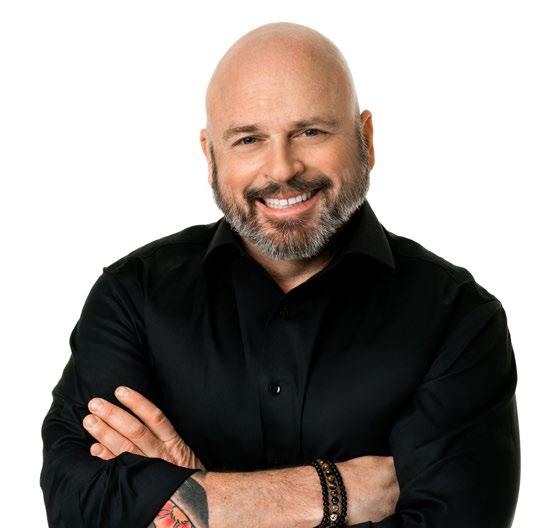
Live broadcast infrastructure solutions provider Techex has named Peter Dawidzik senior director, sales and business development. Dawidzik will draw on his experience in internet protocol-enabled video to advance the company’s commercial strategy and foster deeper relationships across the media and entertainment sector. The Los Angeles-based Dawidzik brings experience in video-over-IP and cloud technologies through prior leadership roles at Zixi, iStreamPlanet and Kaltura.
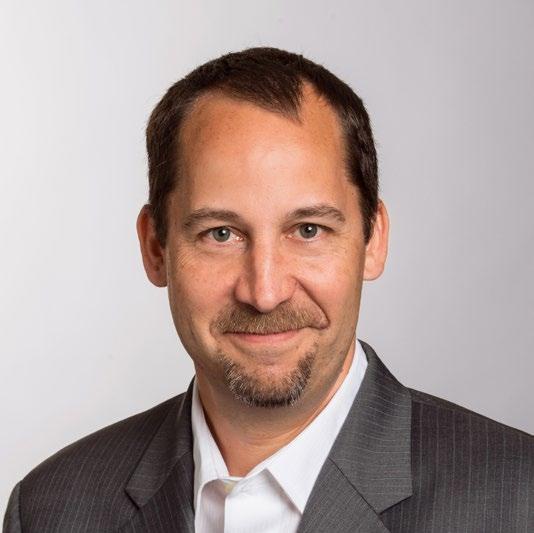
Cam Eicher has been promoted to executive vice president of audio production at audio technology provider Telos Alliance. The new role calls for Eicher to leverage his more than 35 years of broadcast experience, deep understanding of customer needs and strong industry relationships to bring a more unified Telos product portfolio to market more quickly and ensure a cohesive and consistent user experience across products and brand families, the company said.

Audinate Group. Ltd. has named TJ Adams its chief platform officer.
In the new, U.S.-based post, he’ll lead Audinate’s initiatives to deliver cohesive platform software, products and service offerings for designers, integrators and users of AV systems across a wide range of vertical markets and applications. Adams previously worked for QSC, where he was senior vice president, Q-SYS Product Strategy, and played an instrumental role in the development of the Q-SYS platform.

LTN has promoted Bryan McGuirk to chief revenue officer, tasked with driving the company’s global growth and strengthening its leadership in IP-based distribution as the industry shifts away from satellite. A 30-year veteran of the telecom, satellite and media sectors, McGuirk has also held executive roles at SES S.A., Globecom, NBCUniversal and Turner Broadcasting. He is the former CCO at Stingray Advertising and is the former president of media and enterprise services at SES.
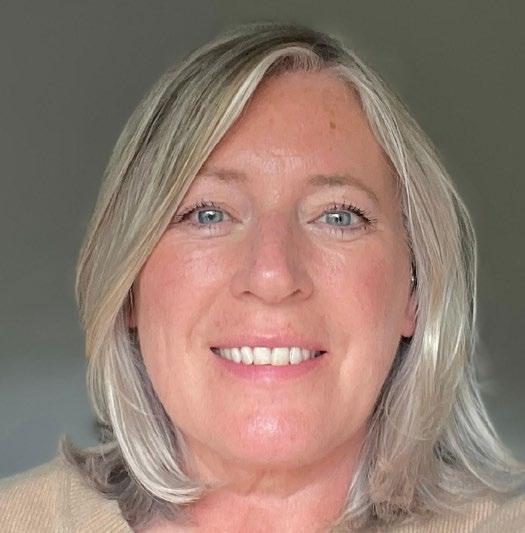
Zixi has named Sue Mitchell director of account management, EMEA. Mitchell will support the company’s growth across the Europe, Middle East and Africa region, working closely with customers to strengthen relationships and expand Zixi’s presence there, the company said. A 25-year broadcast media technology veteran, Mitchell worked most recently at Synchronized, where she drove artificial intelligence software-asa-service (SaaS) adoption for major broadcasters and streamers.
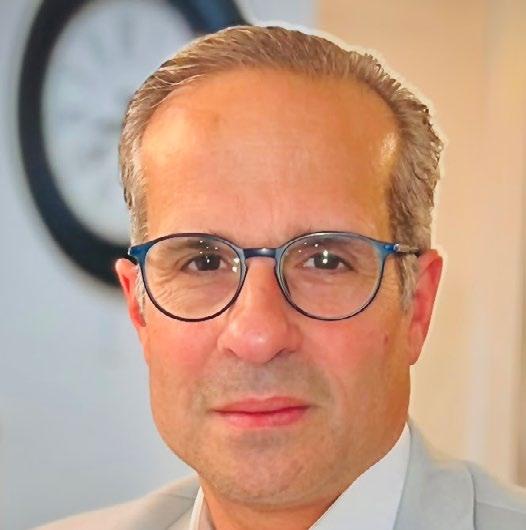
FOR-A America has named Ernie Leon senior vice president, sales and strategic growth. Based in Miami, Leon will oversee sales strategy, business development and market expansion. Leon, who has held senior leadership posts at Sony and AWS, brings a mix of broadcast expertise, cloud workflow innovation and customer-focused strategy that should help FOR-A accelerate growth and better serve its core broadcast, corporate and house-of-worship customers, the company said.
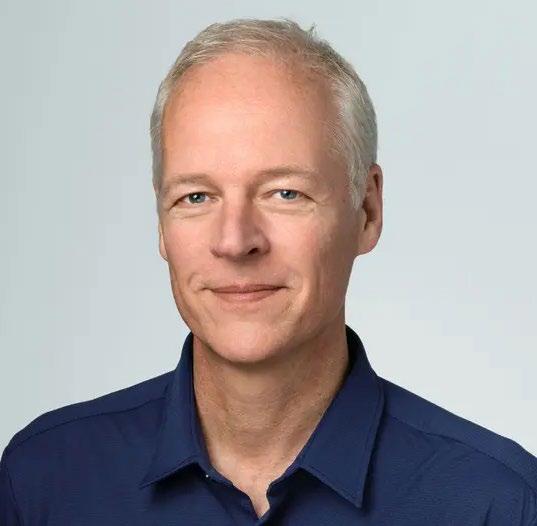
Wurl has elevated Dave Bernath to CEO, replacing the retiring Ron Gutman. Bernath brings more than two decades of experience growing audiences and building revenue strategies for top media and entertainment brands across both traditional and emerging platforms. He had been general manager, Americas, at Wurl, where he was instrumental in expanding partnerships and driving revenue growth as part of the company’s leadership team, and was formerly GM of Comedy Central.
